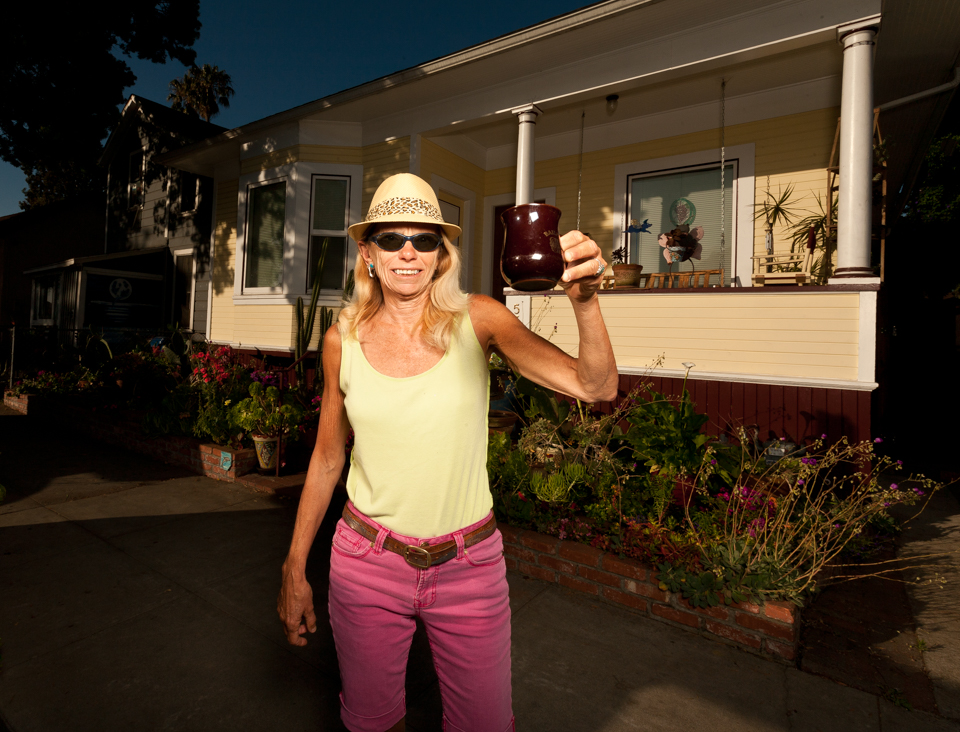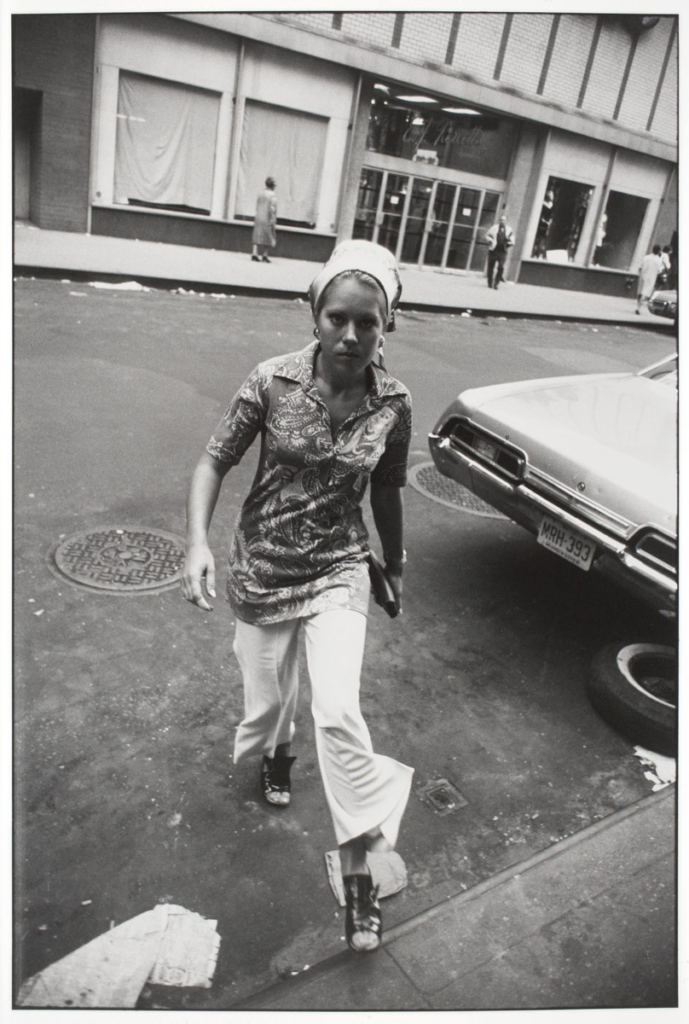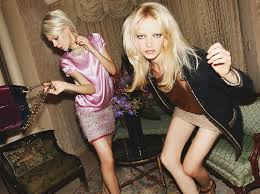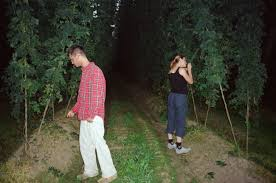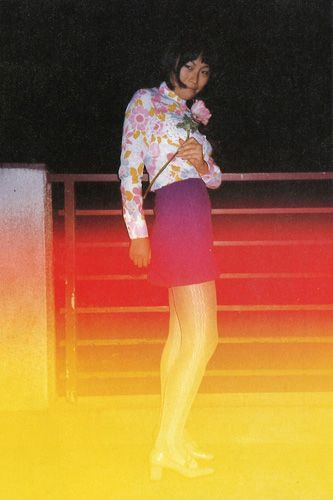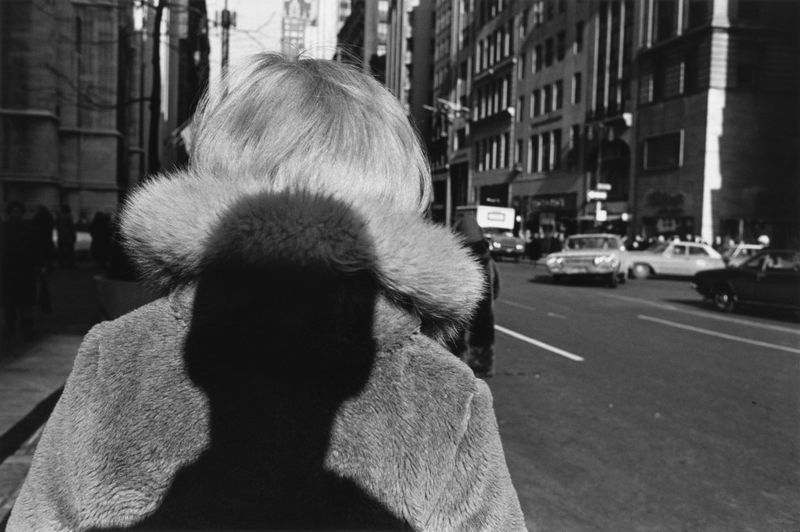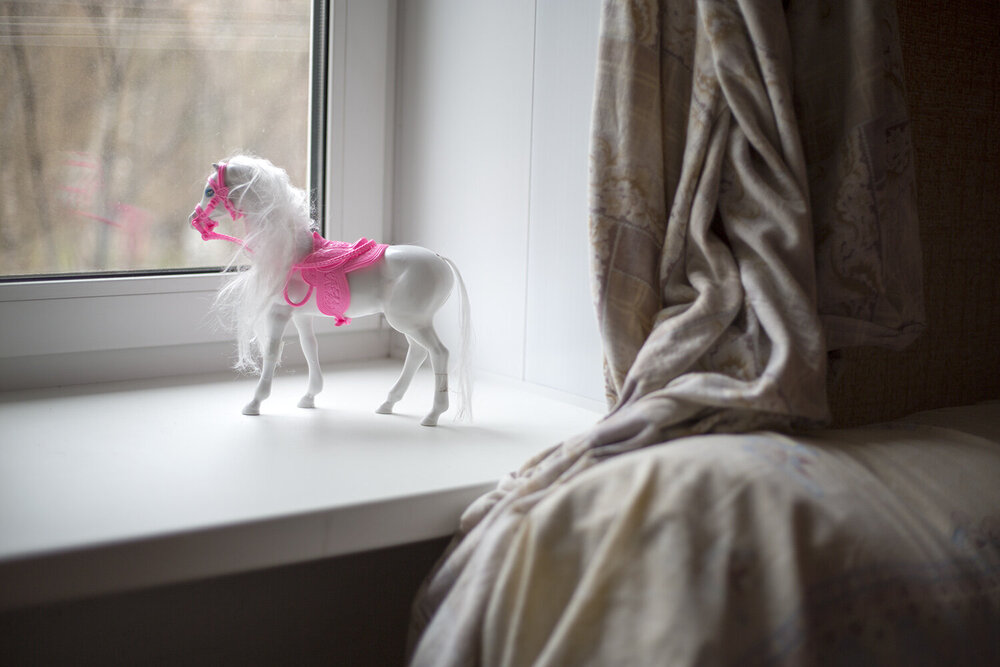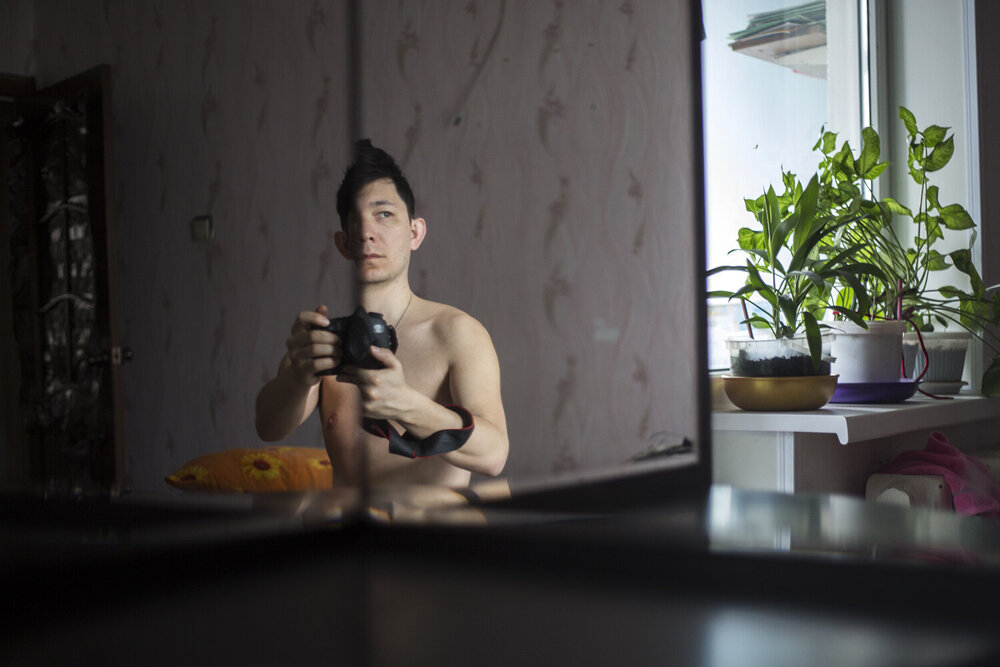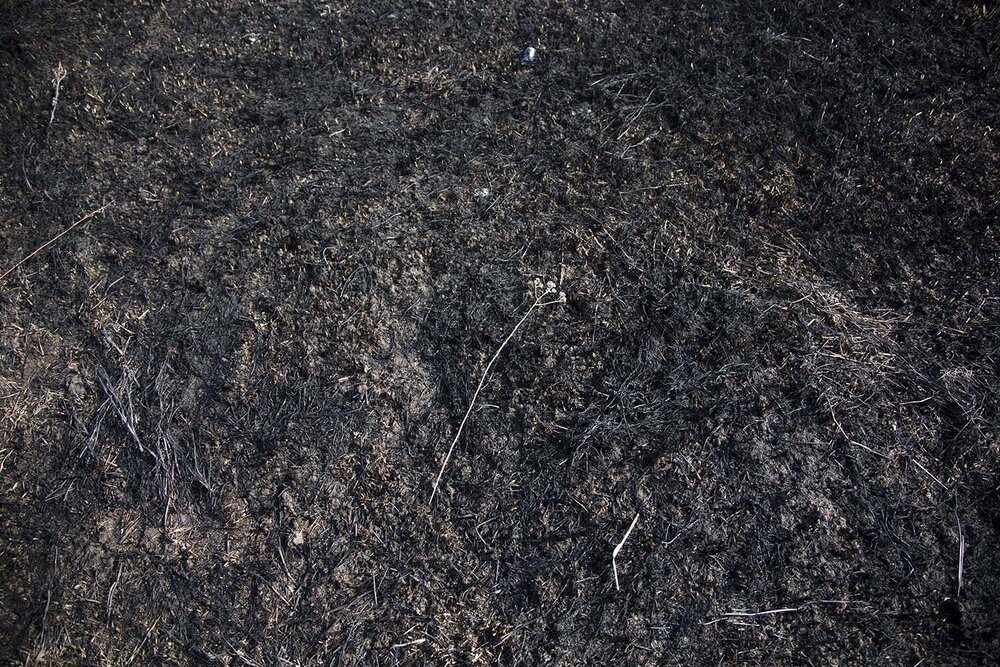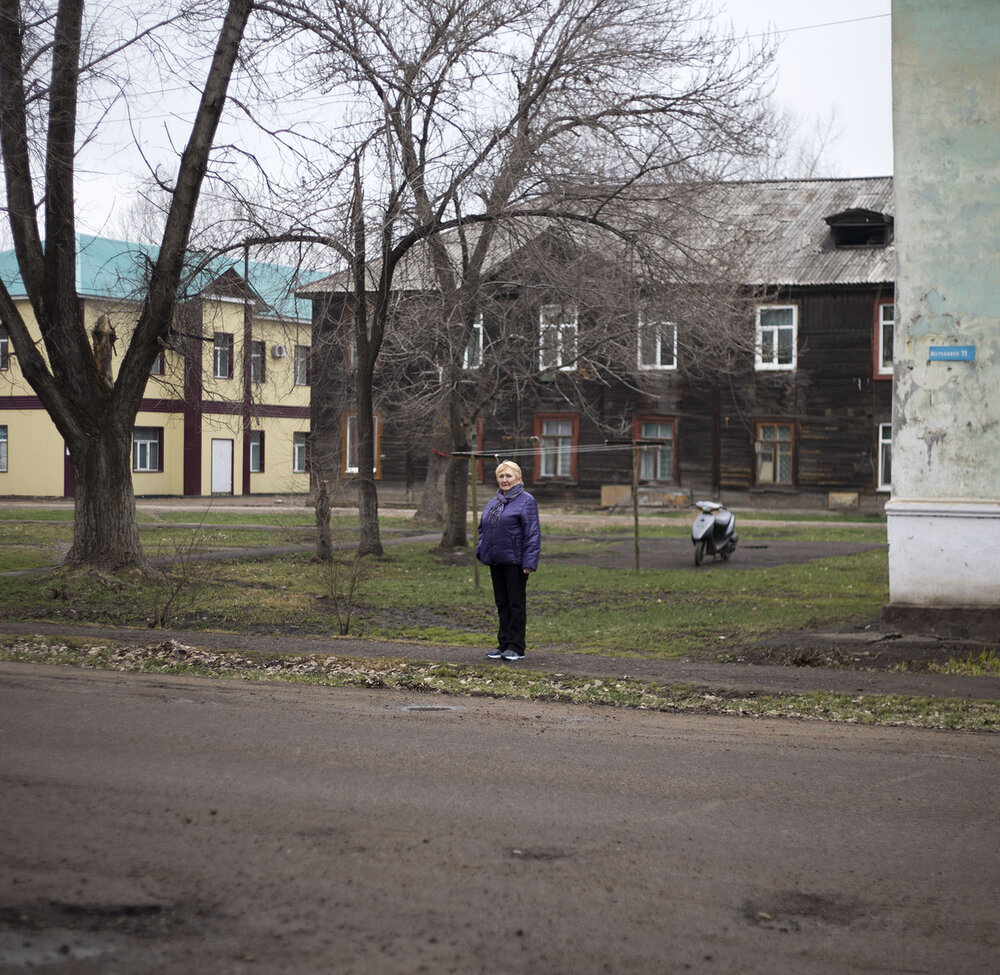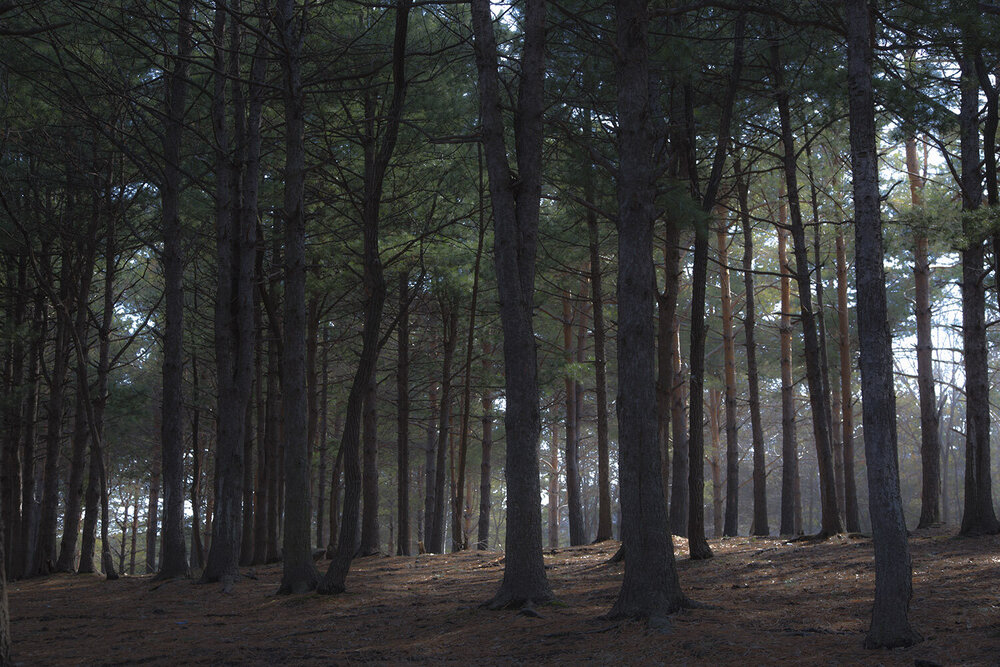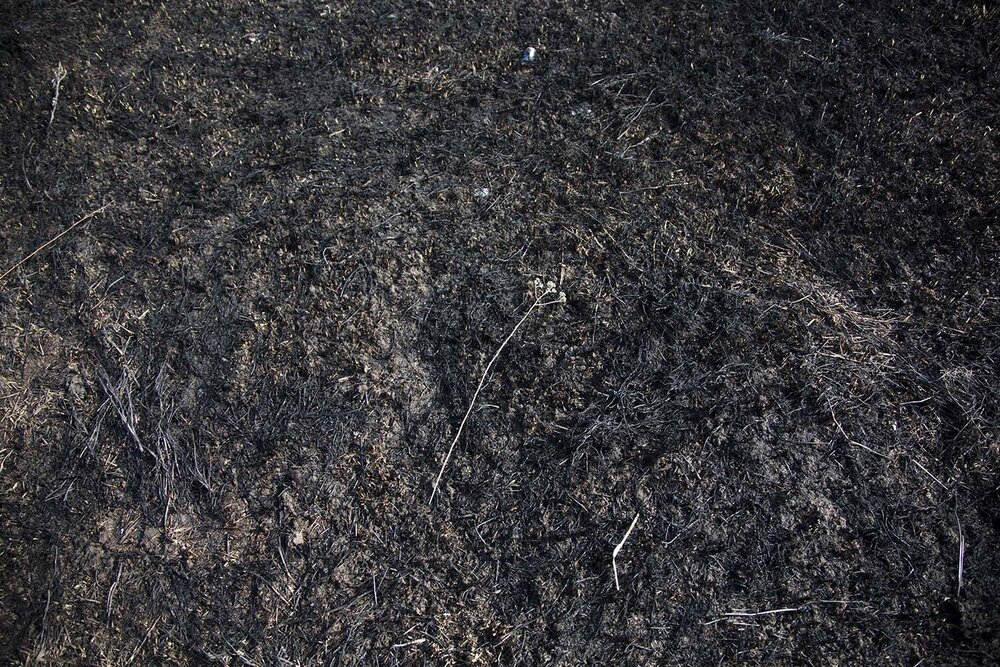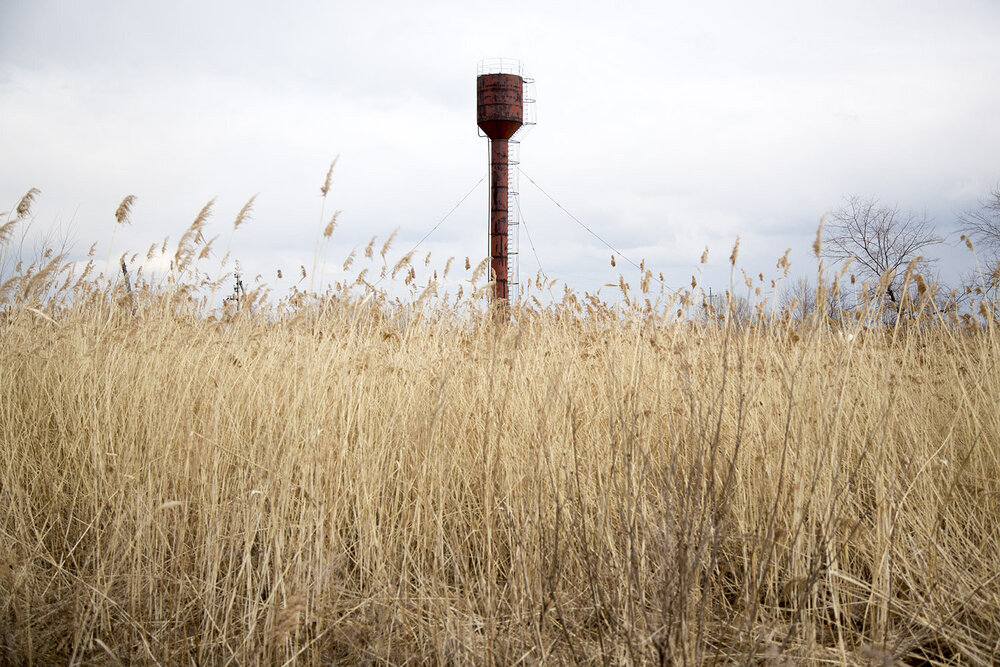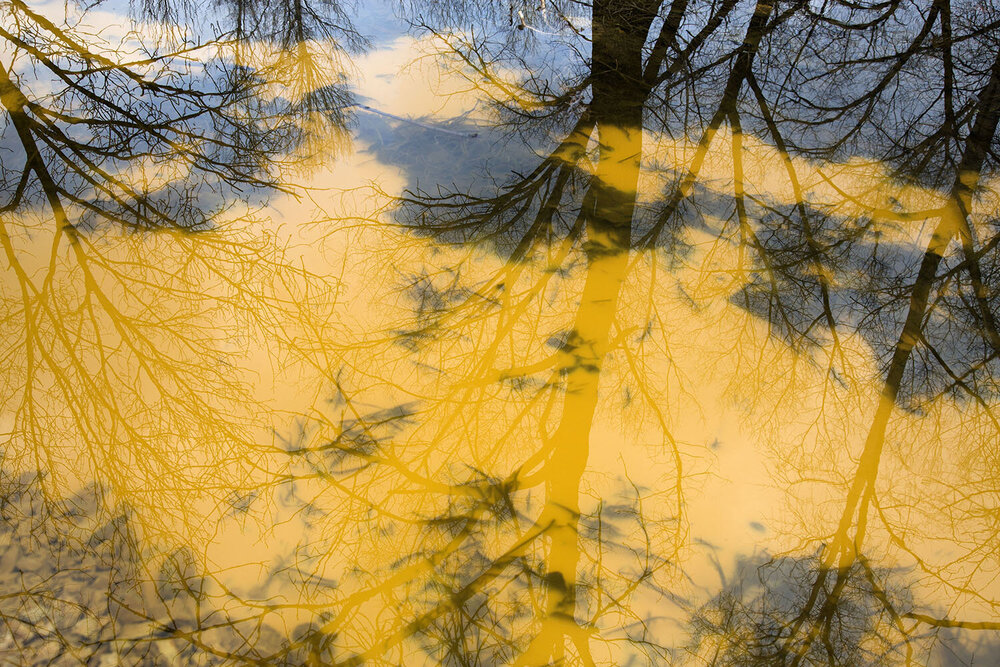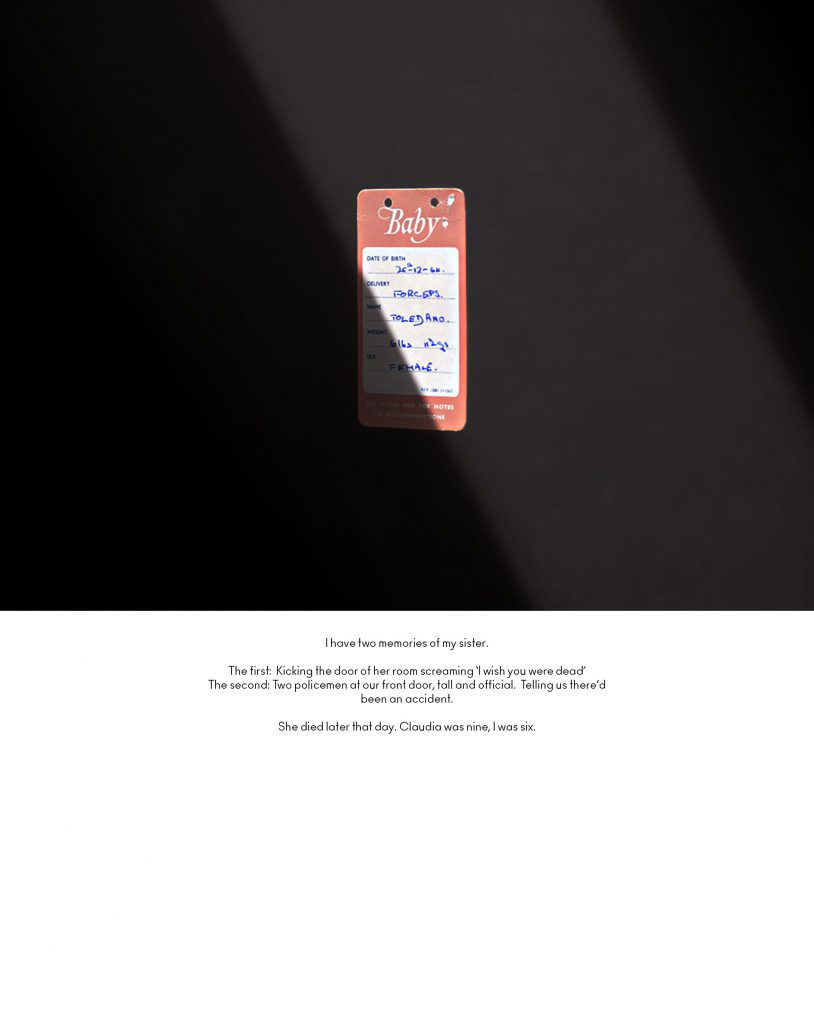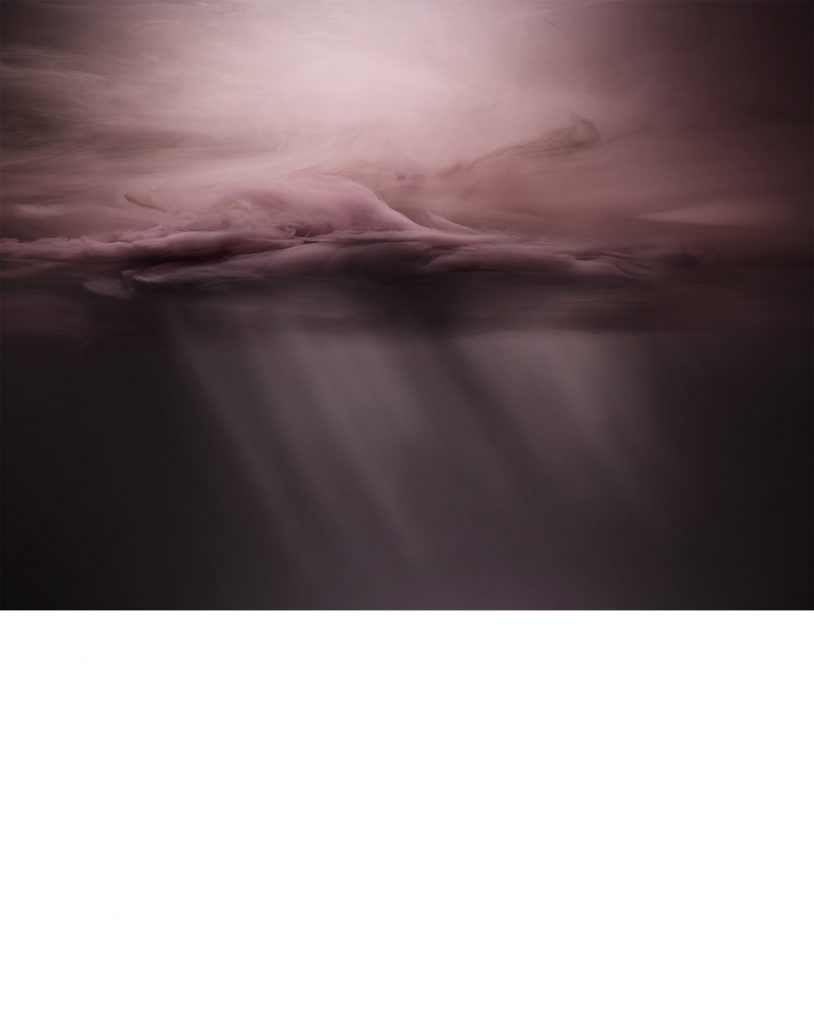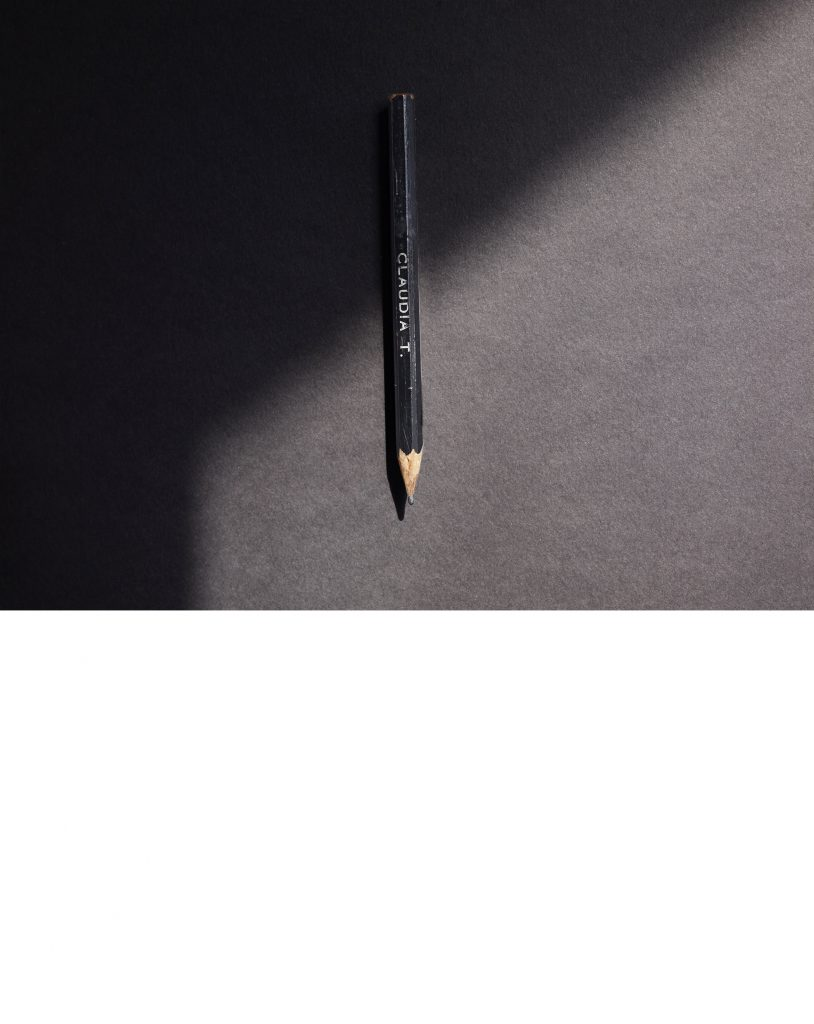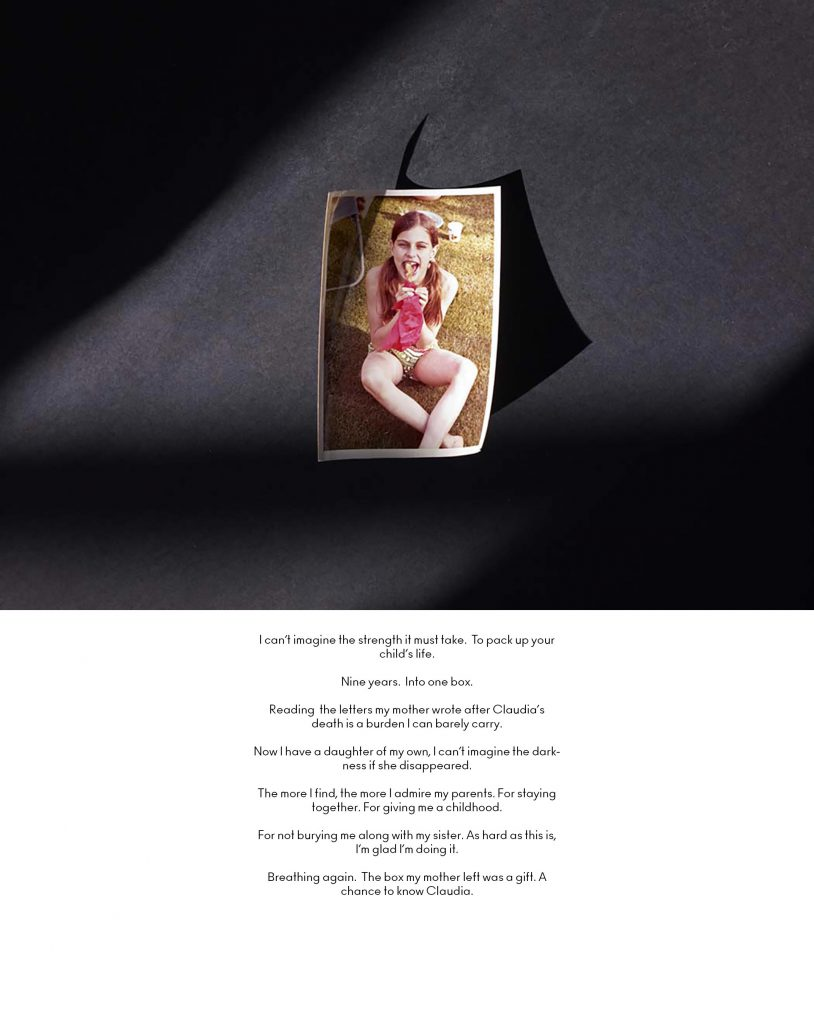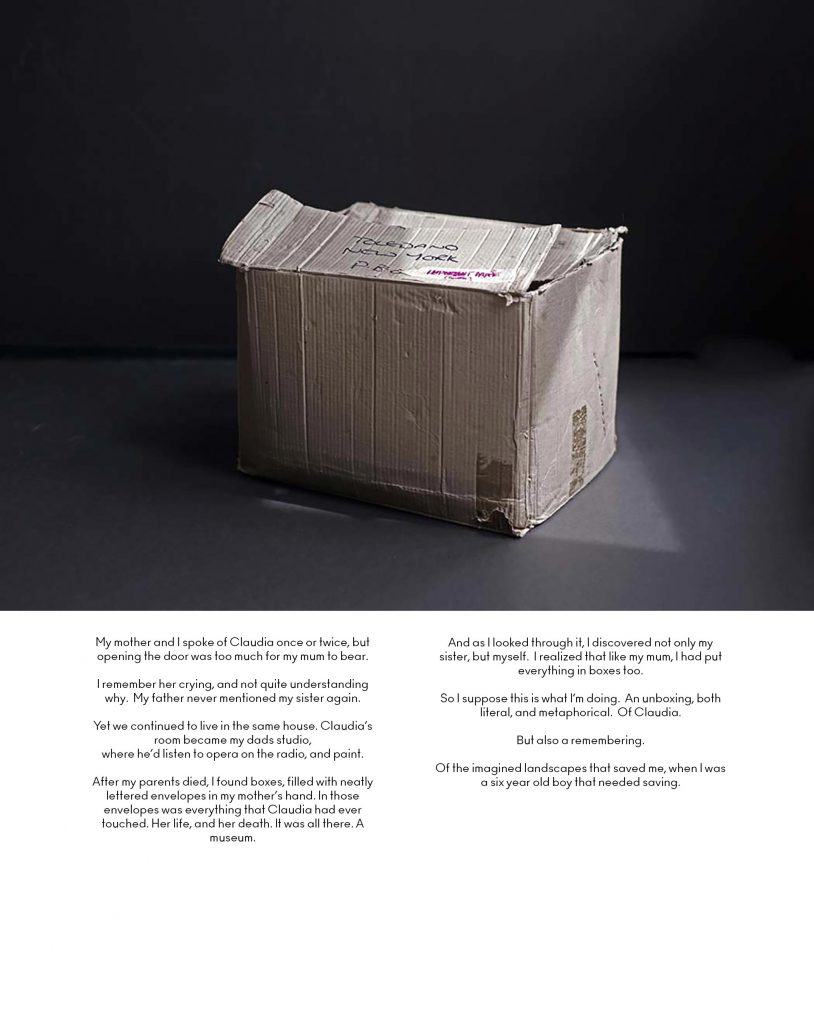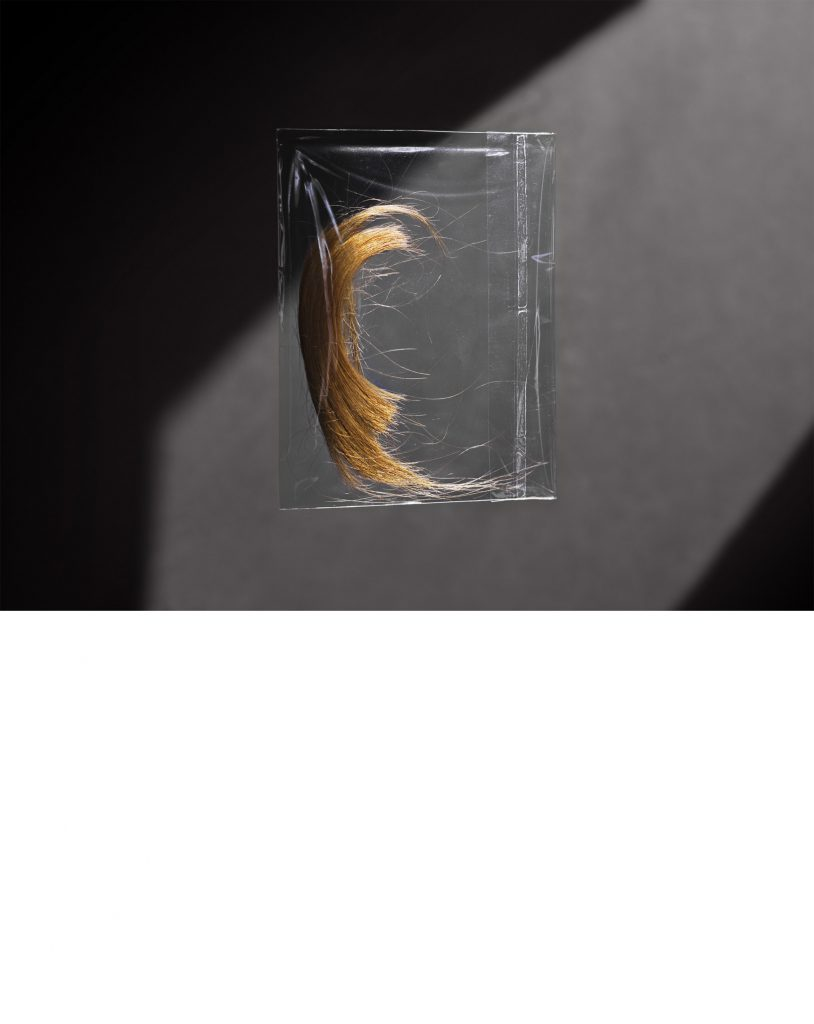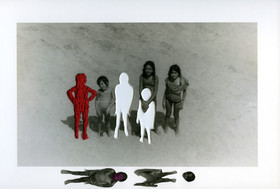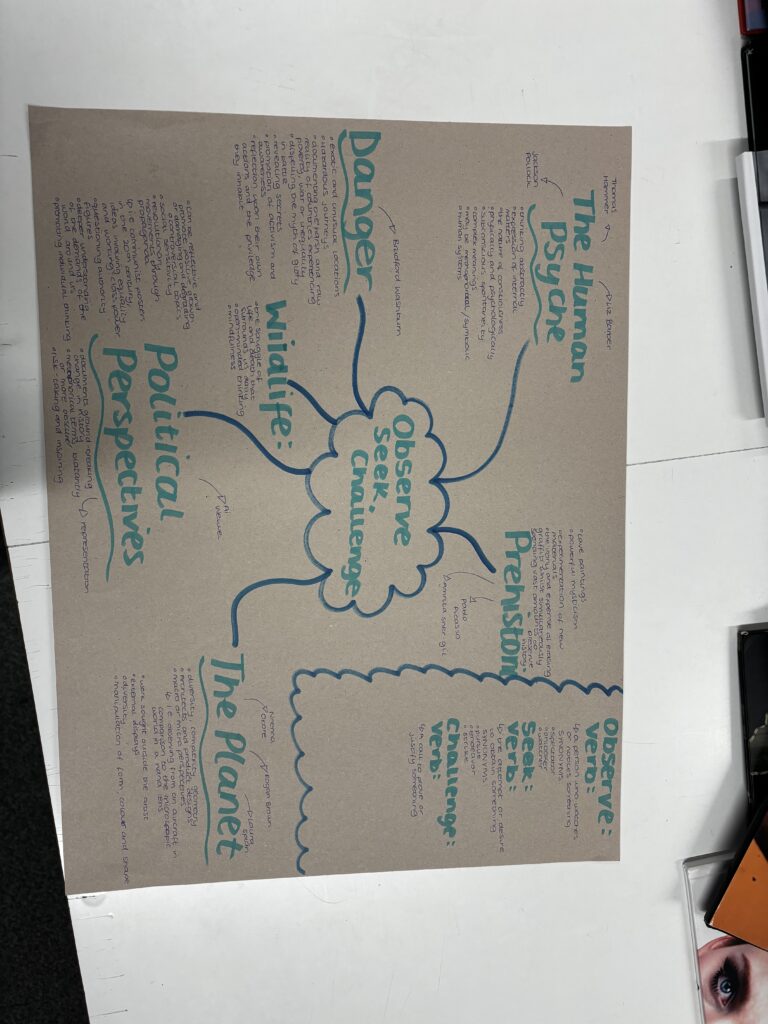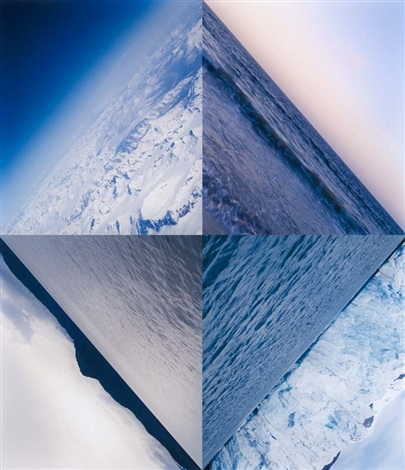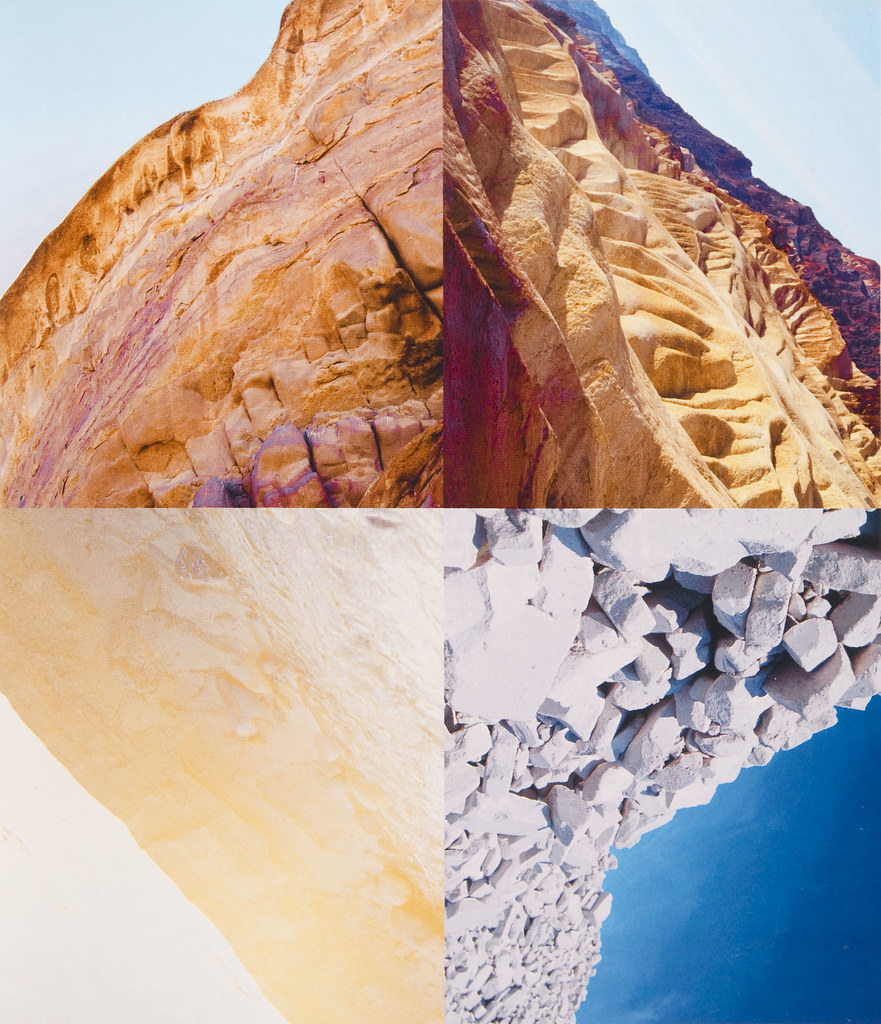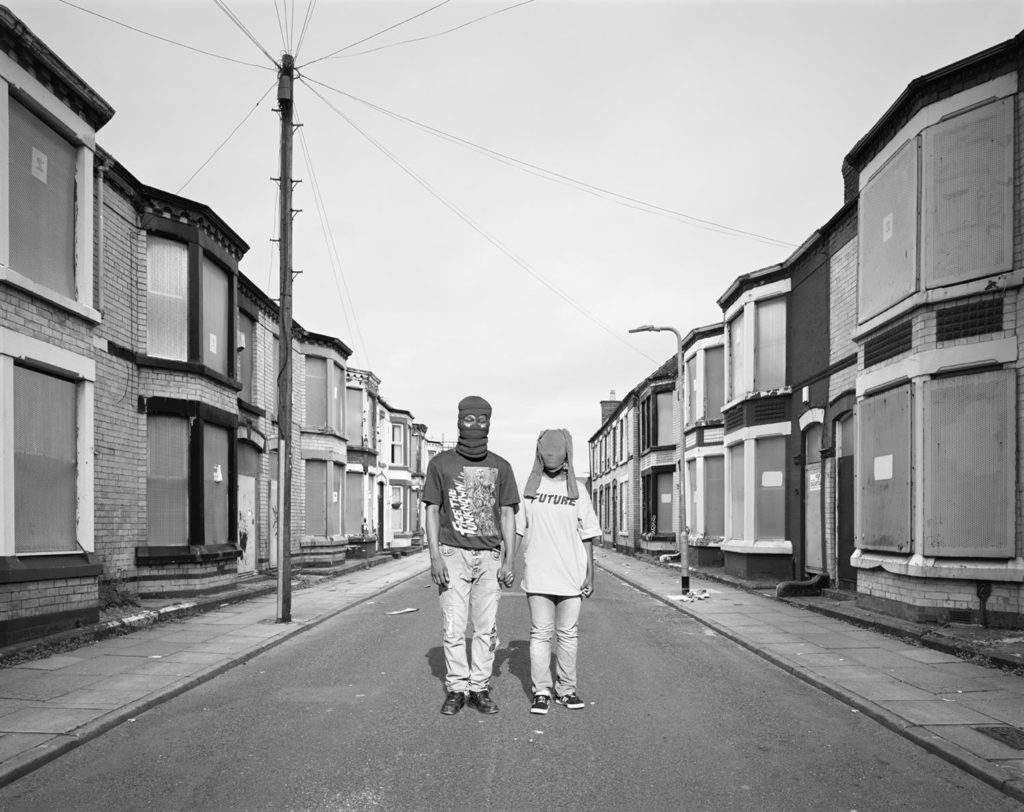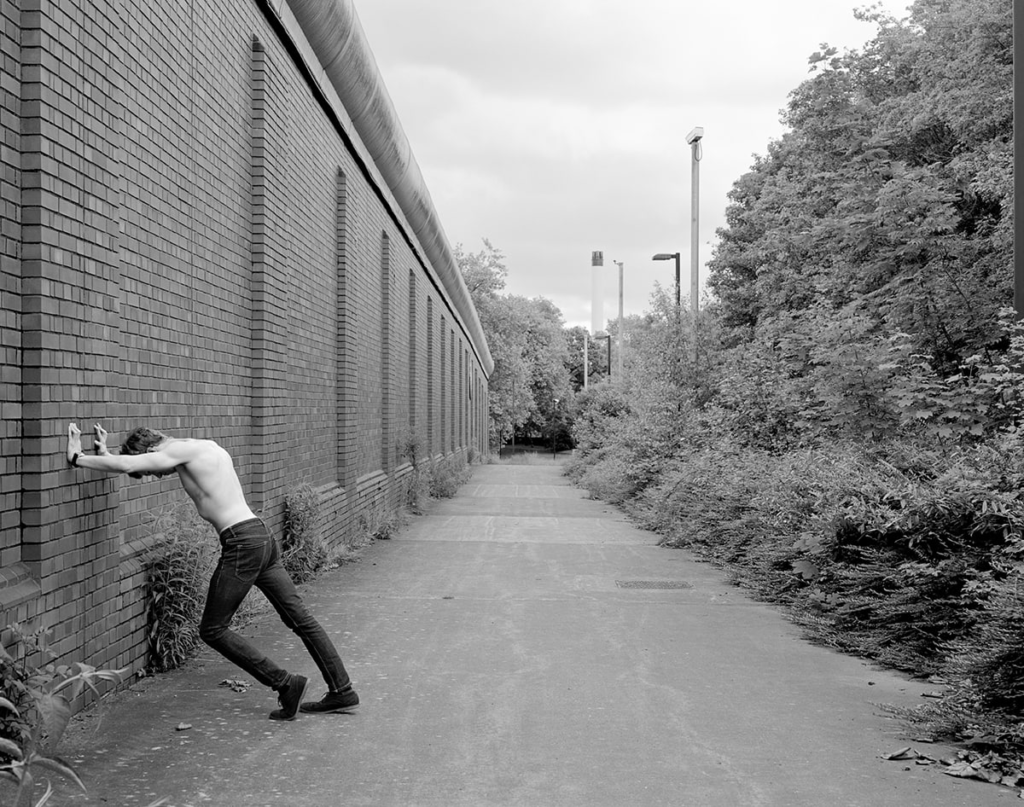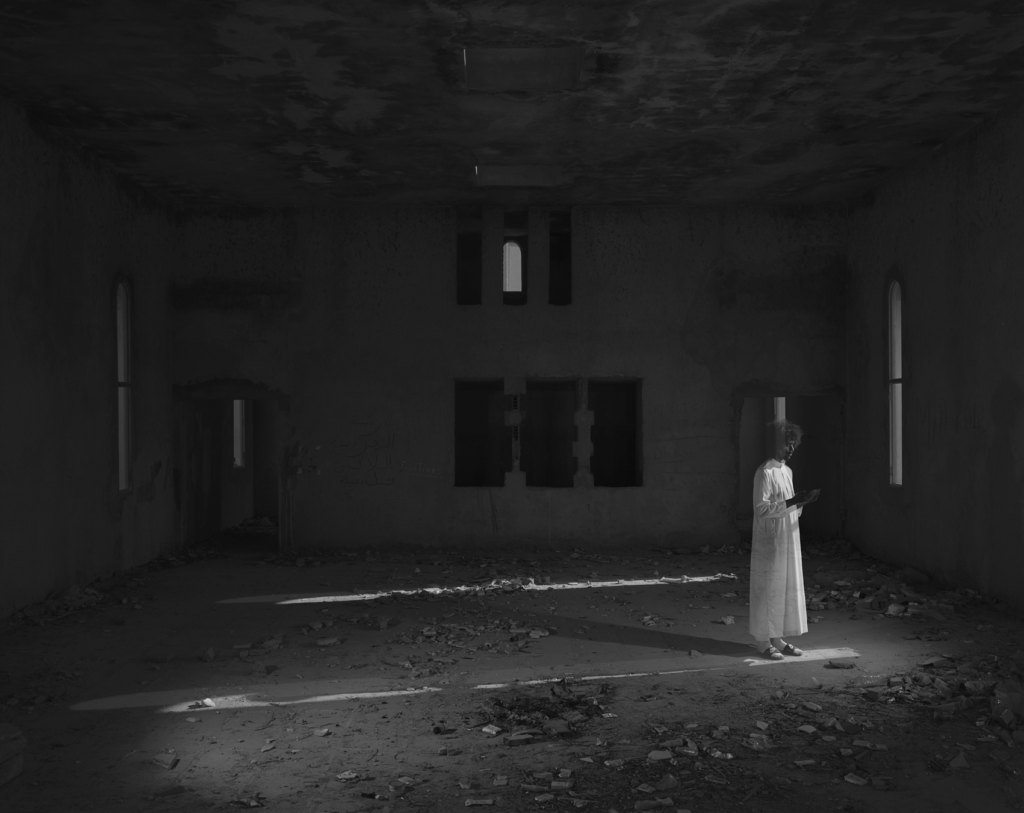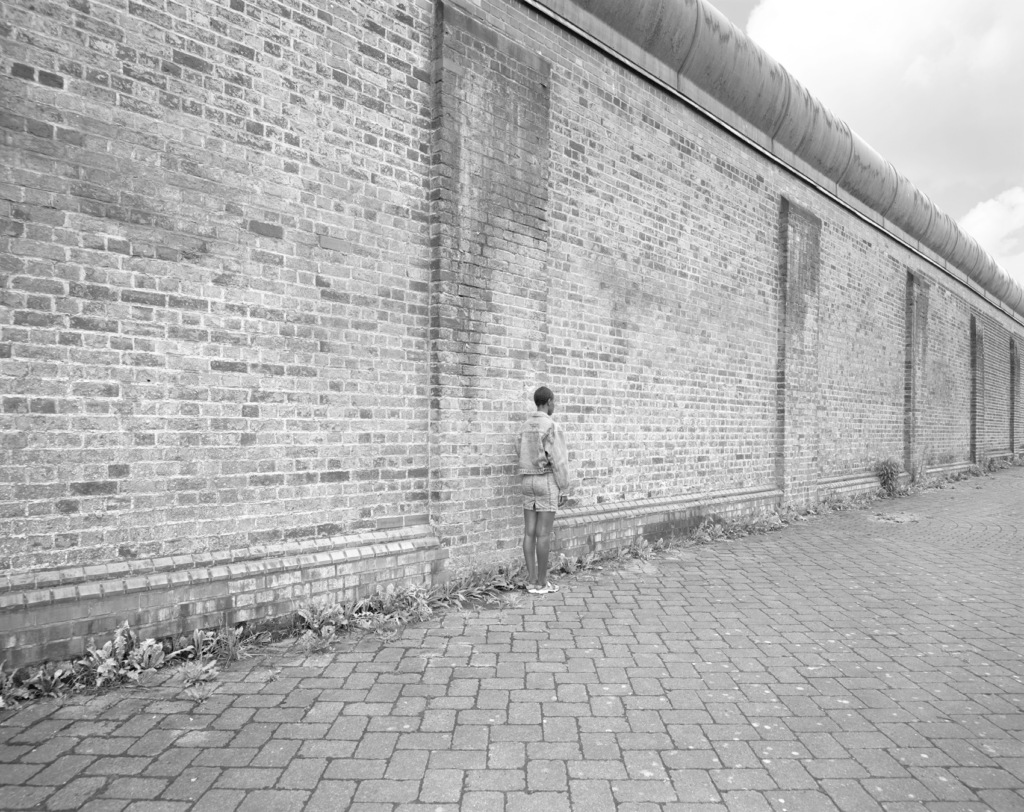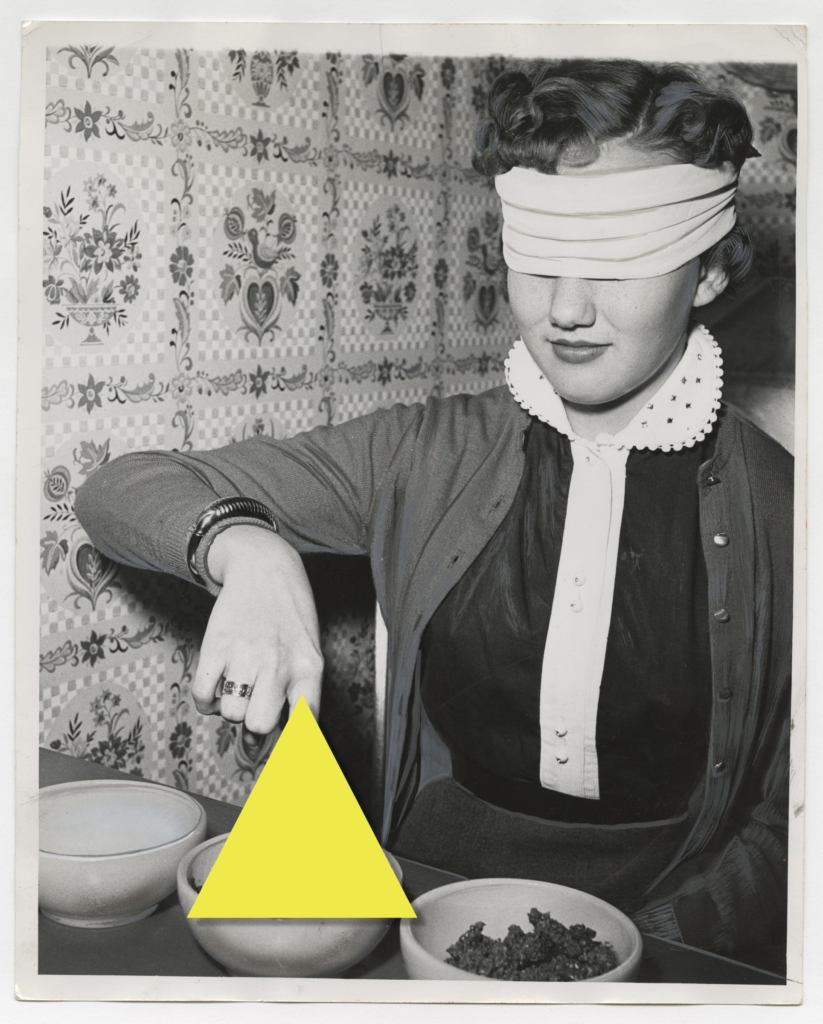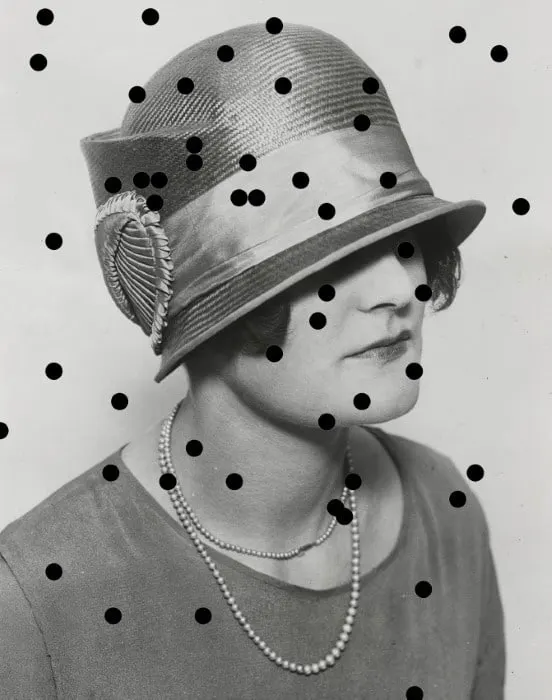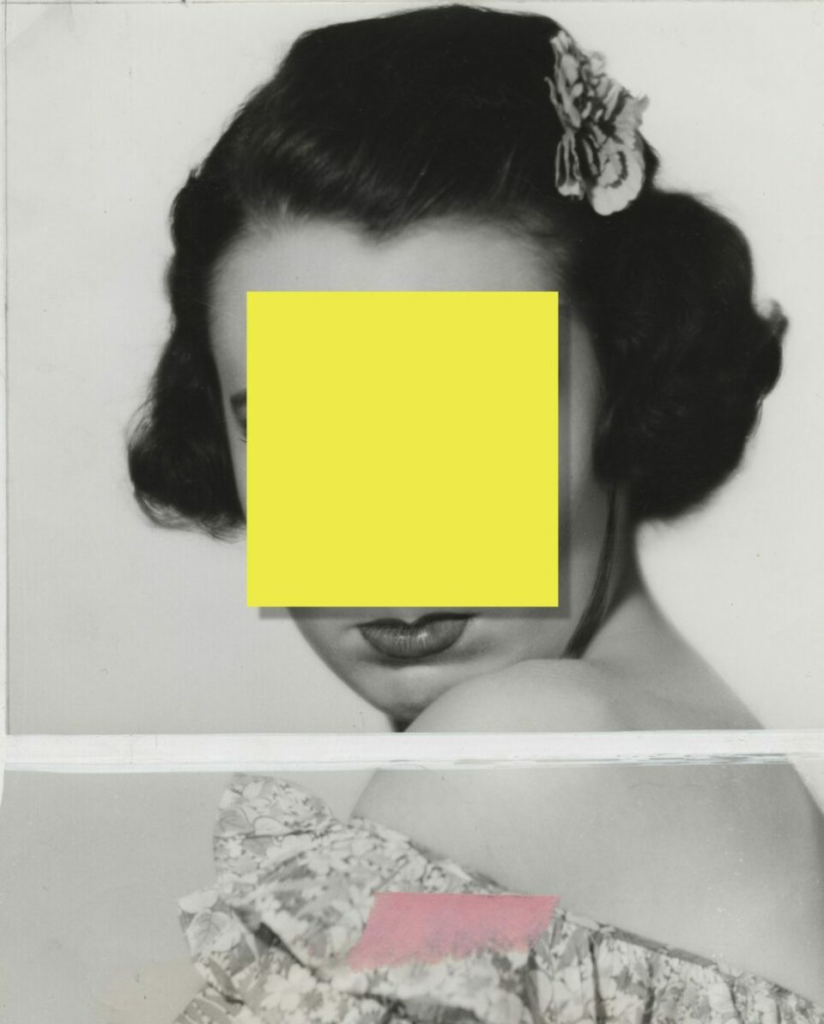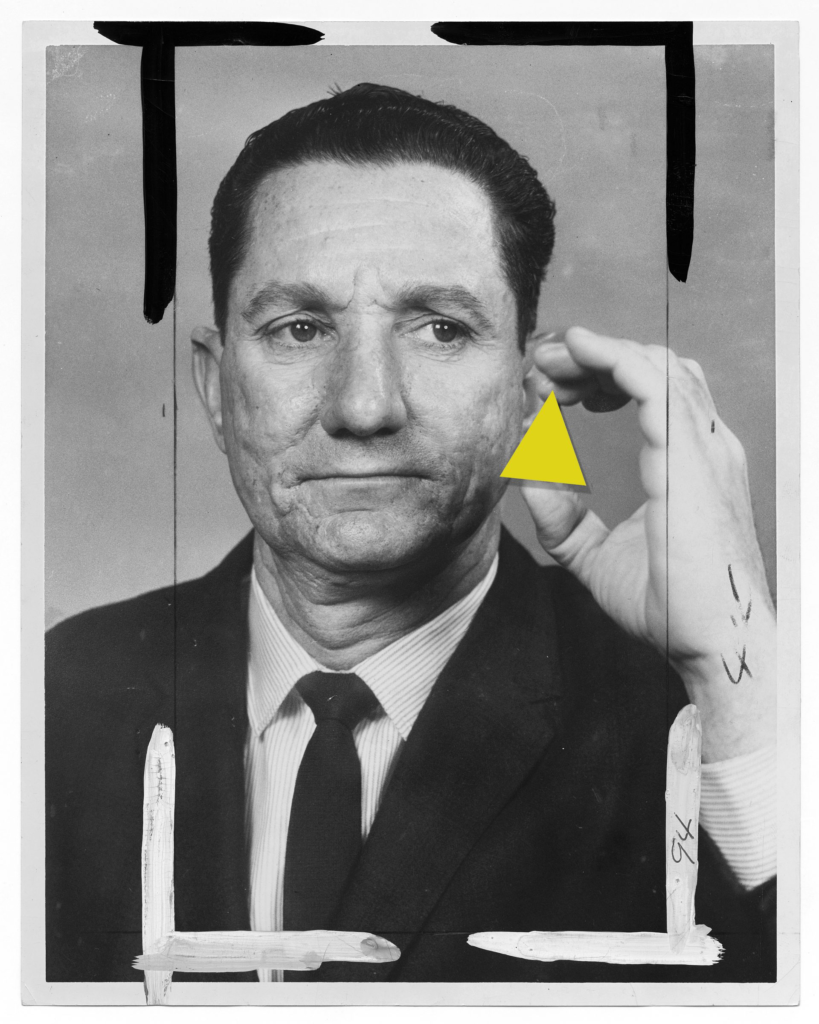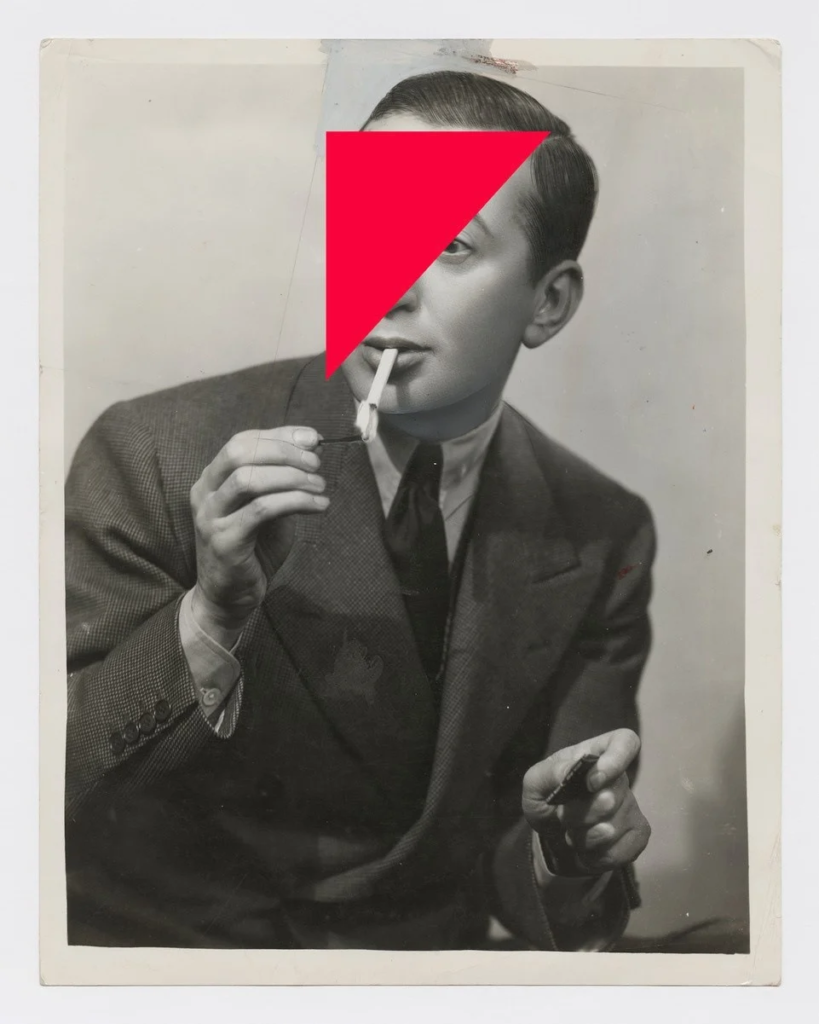My first photoshoot is centred around my house and the places nearby that have a emotional connection to me and my brother as a starting point to build ideas from. I went through each image to decide whether I liked the composition of it or not, and then began colour coding my favourite images and rating them so that I could clearly pick through them and start trying to link them.
CONTACT SHEETS:
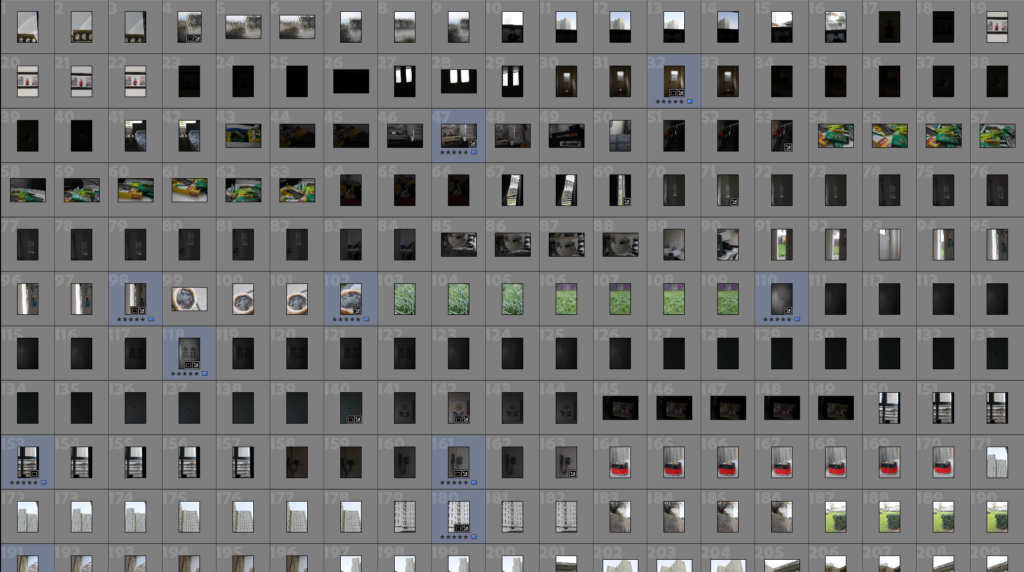

Whilst this photoshoot was centred around places, items and things that have an emotional connection with me or my brother, I also took the formal elements into consideration, specifically when I went outside to the areas that were nearby to my house. I did this because it ensures that my composition will be appealing to my viewer whilst also creating a more detailed and abstract image, this being important to my personal study as it gives a small snippet into my family dynamic and the events that occur when you have a family member suffering from mental illness.
Some of my images can be perceived to be slightly under-exposed, however I think that this has worked very well as my aim was not to be documental in my work, but more abstract and ambiguous. I feel like the images I have selected below portray negative emotions which is my target within my personal study as I am putting the viewer into my own shoes to see small snippets of what it is like.
My images are all very symbolic as mental health is not a tangible object that I can photograph, so many of my images within my personal study have to represent the inner emotions that my brother feels whilst going through this. It was important for me to be subjective during this photoshoot because I am trying to turn a feeling or thought into an image which is a difficult thing to do.
BEST IMAGES:
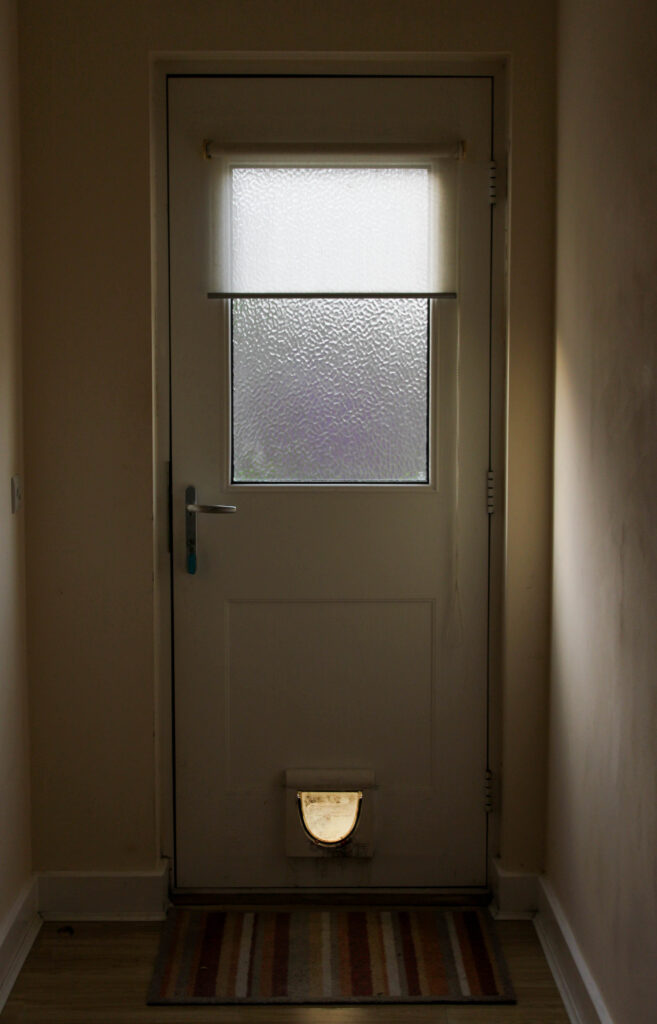
This image is taken of my back door next to my brothers room which he uses regularly due to him being a smoker, however I thought that this would make a strong image, specifically because of the diagonal lighting that goes past the window and bounces onto the wall as when it is paired with the darkened shadows, this creates an effect of gloom and mystery. This image is slightly under-exposed, however this was my aim because I don’t want my images to be too bright as this may convey emotions differing to what I am intending, for example it may make the image look more happy as bright images can be commonly associated with lighter feelings, rather than this solemn tone that I am aiming for. As there is natural lighting coming through the window, this creates a glowing effect in the centre of the image that could be interpreted as seeing ‘the light at the end of the tunnel’ due to the darkness that is in the hallway until it reaches this burst of light. As this window acts as a privacy window due to the texture over it, meaning that the end of my garden is reflected through. Because of the objects in my garden, this has created a purple tinge to glow through which I think contributes to this idea of things getting better over time. This image also connotes ideas of being trapped, for example the cat flap acting as if a portal to the outside world even when the door is locked, however it is evidently too small for a human to go through. I feel that this is very representative of this idea of negative mental health making a person feel helpless and trapped within a consistent cycle of breakdown, treatment and healing that has repeatedly had an effect on my brother for years. This darkness shadowing around the image acts confining, as if the back door is holding in all of this darkness. I think this could clearly represent how mental health is not a physical thing, but more like a fever of the mind that is more difficult to treat in comparison to a tangible injury and disease.
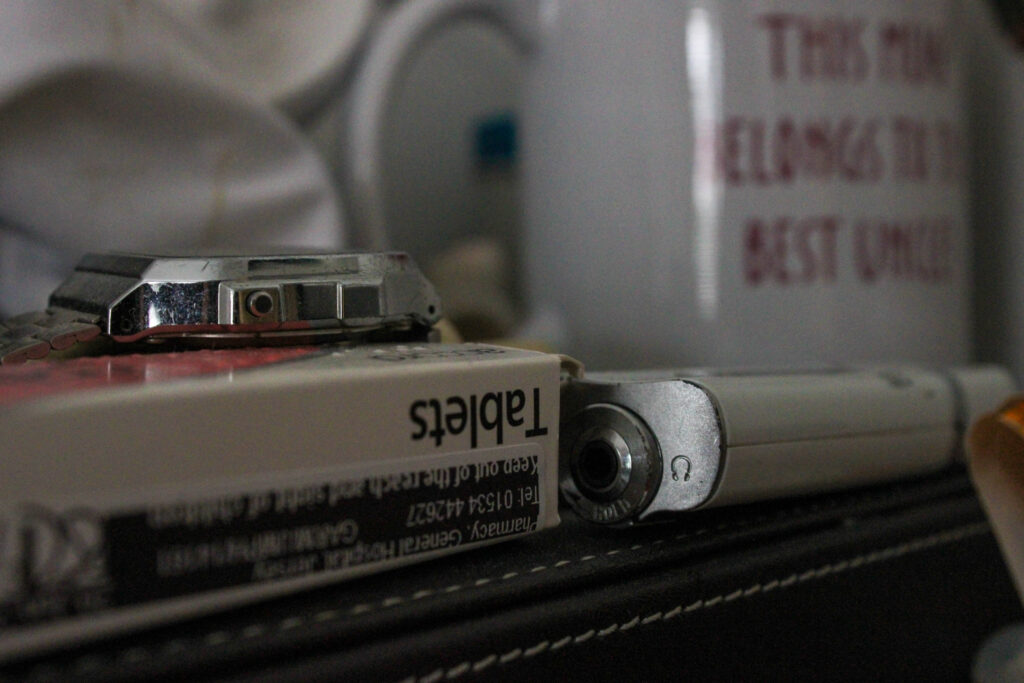
This image is taken from within my brothers room, looking at the objects that he puts on display on his shelves. I feel that the composition within the image is very successful, with my focal point being on the word tablets. I really like this image because it is demonstrating the medical side to mental health as it explicitly says tablets, and the surrounding items such as the watch, have become shiny and reflective due to the natural light coming through the window behind me. I have used a shallow depth of field in order to blur the items that are built up behind the box of tablets, however the words can still be made out on the mug behind being ‘This mug belongs to the best uncle!’. I felt like this was a very sentimental touch to the image as it reinforces the concept of family support, how the difficulties of having a family member with poor mental health has second-hand repercussions, however it implicitly shows that all my family members try to do whatever they can in order to try and help alleviate some of my brothers symptoms by giving him reminders that we are there for him.
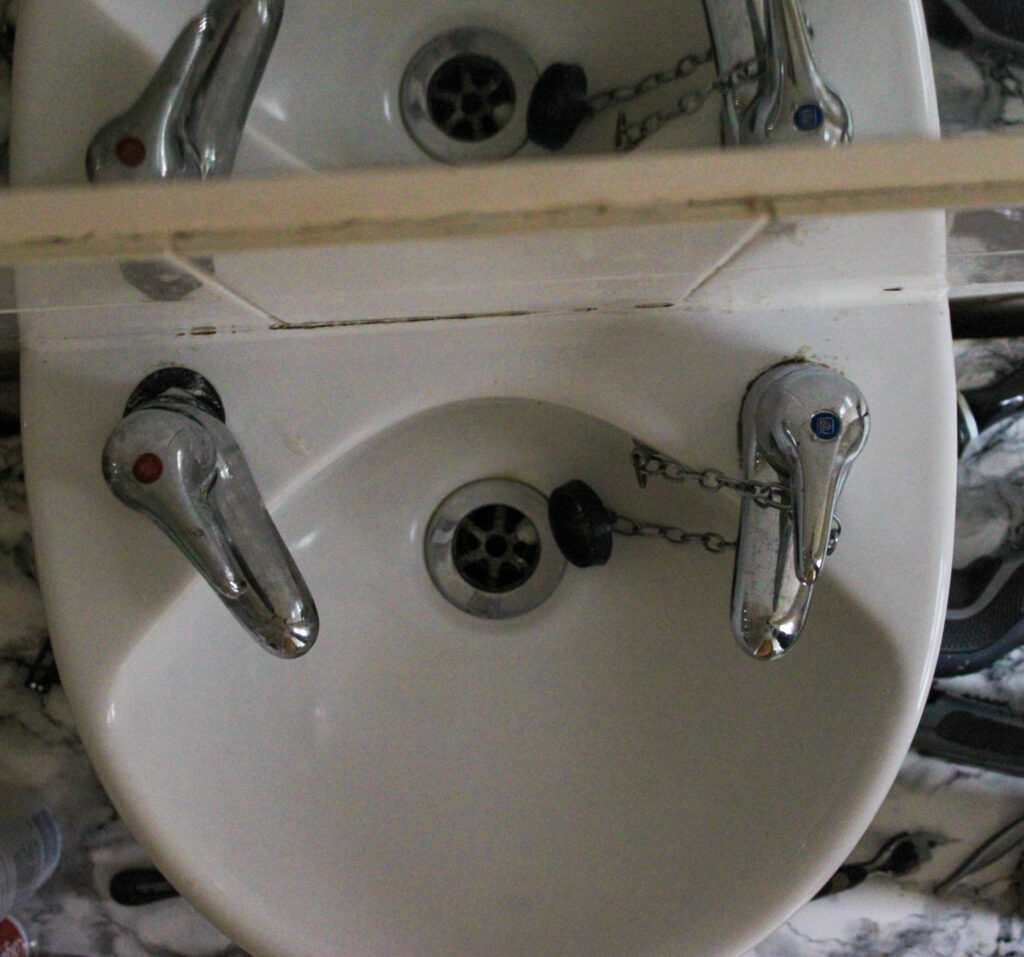
I would say that this is one of my favourite images, specifically due to the diagonal reflection of the sink because it adds the element of repetition which makes the image a bit more balanced, however I feel that this image could be interpreted as an inward reflection, representing how my brother may look into his bathroom mirror and recognise himself as a stranger, not realising how much this illness has changed him. This idea of not recognising yourself may connote ideas of depersonalization or disassociation, the disconnection from a person’s sense of identity. This detachment from physical and emotional experiences is a heavy topic and I feel like this image encapsulates this intangible pit in a persons stomach when they don’t know who the person is within their own reflection. The diagonal aspect of the image can be symbolising disorientation which is why I didn’t correct this in Lightroom as I feel that this contributes cohesively. Overall, the composition flows nicely, with specific tones of grey echoing throughout for the cream paint on the wall to act as a border between the backsplash tiles on the sink against the mirror. This could be seen as creating a divide between reality and fantasy, for example the sink is a physical object that can be visibly seen in an objective way, however a persons reflection is subjective depending on how the person perceives it. This goes back to my idea of disassociation because it reminds the viewer that my brother is not going to see everything the way it actually looks, specifically his own reflection as this struggle has been something that has taken a lot of time away from him. I think that by utilising this under-exposure, it looks as if a cloud of darkness is above the camera, which could be under the intention of a heavy and clouded judgement or mind itself.
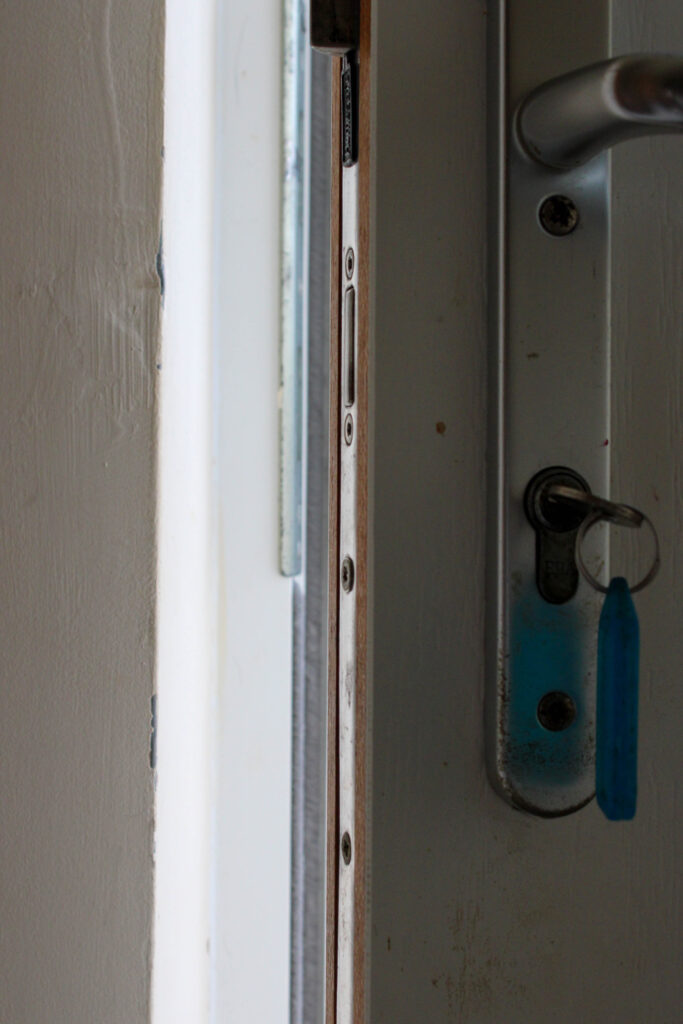
This image is also taken of my backdoor, however I have opened it slightly and zoomed into the handle to capture a more focused image. My favourite aspect of this image is that the edge of the door stops at the exact middle of the image, dividing it up into two sections which is pleasing to the eye. As this allows the natural light to flow in slightly, this has created a reflection on the door handle, making it look shiny and metallic which makes the handle stand out as the focal point in the image. I feel that the burst of colour that the key ring provides, and then reflecting onto the handle, can be seen to echo into the edge of the latch of the opening of the door which makes the image flow better. The way that the door is open yet still appears closed is another part of this image that drew me into using it as one of my best images as this can be seen to once again reinforce this idea of being in a prison of the mind, where there is a constant battle between recovery and relapsing back into a breakdown. The line between the two can often be perceived to be binary opposites, however the upkeeping of the balance between these two states of mind aren’t as separate from each other as it seems which I think this image demonstrates very well. This image also connotes ideas of the unknown, not knowing what is behind the door as it opens applies a very eerie tone to the image that I think adds to the drama of what my personal study is about.

As my brother smokes in abundance, having a fixation on this at times due to his illness, I thought it would be appropriate to photograph the ashtray that he uses in my garden on a day to day basis as this is giving the viewer a bit more insight into who my brother is so they can begin to formulate their own identity for him. As abstract viewpoints are a pivotal part of my personal study, I decided to take this image from a diagonal angle from one point of the ashtray to oppose the other point across from it as this could be used to capture more detail instead of taking a more ‘deadpan’ approach to it. As it had been raining in the past week, a pool of water had formulated around the cigarette buts and made them break apart and separate. Upon initial look, the composition is very messy and looks chaotic due to all of the tobacco intertwining and layering over the skins he has used. I feel that this can be very effective in symbolising how my brothers mind may feel crammed, congested or obstructed, resulting in him feeling adrift when coping with the demands of the world around him. The fact that the components of the cigarette are just about to break the surface of the water may resemble how difficult it is to have this need and want to be able to contribute to society, whilst still feeling trapped by this bubble that your brain has created to restrict you from living properly.
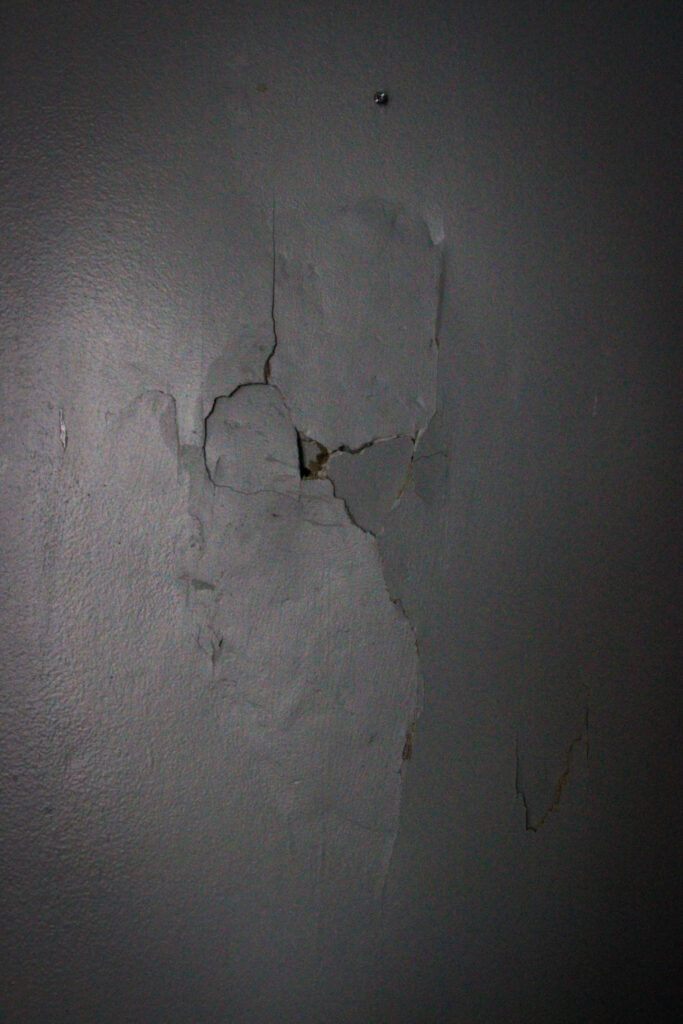
Looking at Laia Abril’s work on The Epilogue (2014), I gained an understanding that within photobook’s about pressing topics, it is key to have a defining image about the situation to not only ensure that the storyline is clear to the viewer and not misinterpreted, but also as a large emotive factor as this is important to truly portray the difficulties behind what is being spoken about. I felt that this image would be suitable because it shows the violence that Bipolar disorder inhabits within a person and can really represent the loss of control that it causes, resulting in shame and guilt afterwards for events occurring that are out of that persons control or can’t even be recalled. I added a slight vignette to this image as I feel that the shadowing makes the cracks stand out greater and become brighter, to not only make this image bold to the eye but to emphasise each ridge on the door so that it is easier to see all the details. I think because the door is grey, this helps to reinforce this idea of emptiness, making the image look bland and lifeless alongside a large crack that runs up the door. I feel that this image, if I use it in an effective way, could be incredibly powerful in my work as this image carries so much rage in it in a muted way.
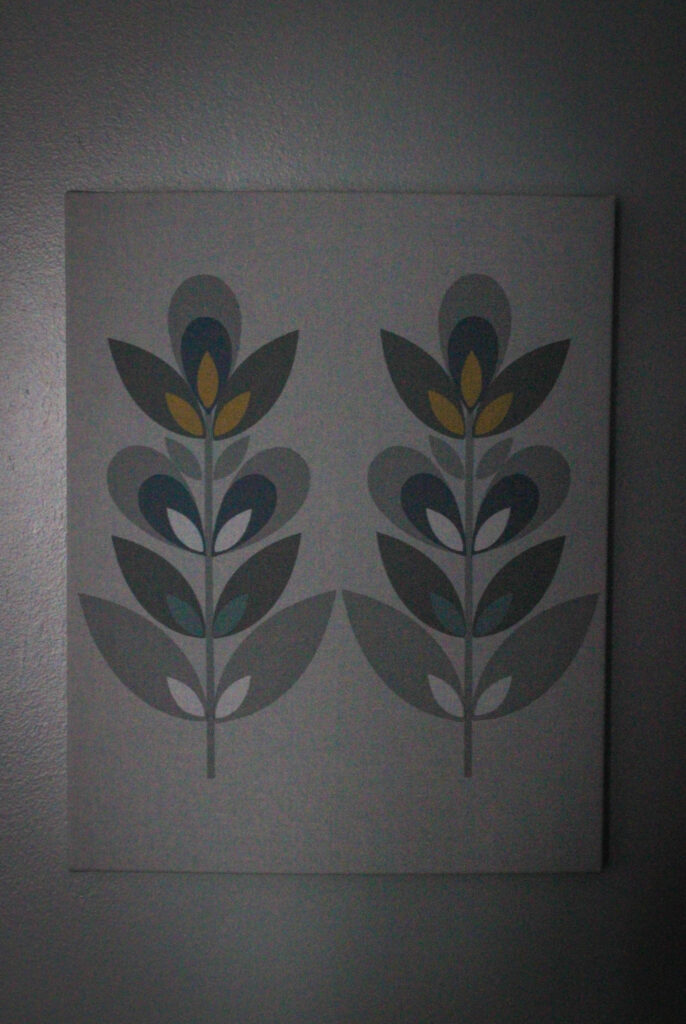
I took this image above as a comparison image to the one above it as this is how my lounge typically looks, however the crack on the door is covered up. I thought this would be a good way to represent how things are not always the way the seem, and that there are many events that occur surrounding my brothers mental health that are concealed or hidden as it is sensitive. I may use Photoshop to create a photo montage of these two images as I feel that the story will link better if I include the image of the picture frame placed over the crack in the door underneath as it will convey the idea of being secretive. I feel that this will link in with the ideology of the stigma surrounding men’s mental health as it can symbolise how this is not as frequently spoken about. I added a slight vignette to this image too so that it would be able to go hand in hand with the image above as they should have the same levels of lighting (and highlighting) in order to move the viewer to think deeply about what my work represents.

This image is taken from the shared calendar I have hanging from my kitchen door. I began planning for this image by going through each of the months in the calendar to see which dates had writing about my brother, however I decided to use the 17th and 18th of November as I feel that these dates had the best information relating to my brother as it is focusing on the hospital alongside showing that my parents regularly have to have meetings with all kinds of organisations, for example the staff at Orchard House, doctors or my brothers care-coordinator. I took this image from a low angle because I feel that this could be interpreted as a child’s perspective looking up at the information my mum would write for example. This is the focal point of the image and the surrounding dates are slightly out of focus as well as the other pieces of writing that aren’t as relevant. However, I didn’t crop this out of the image as I feel that this gives the image more authenticity as having a shared family calendar is a common thing, so I wanted to involve this aspect because it represents that things must still go on. I feel that this can be interpreted as showing that this silent issue is something that adds pressure to the whims of everyday life, but its important that it is not something that is consistently affecting me or my parents as this would restrict us from getting on with anything important or achieving anything. I feel that by using a low angle when shooting, I can resonate this with a child-like perspective, looking up at the calendar to information that wouldn’t of necessarily made sense to me apart from something important revolving around my brother. This could signify how my brother has been struggling with his mental health for a number of years now, beginning when I was still a child, and how the experiences of growing up around a family member who has a mental illness has shaped me into being a more considerate person today.
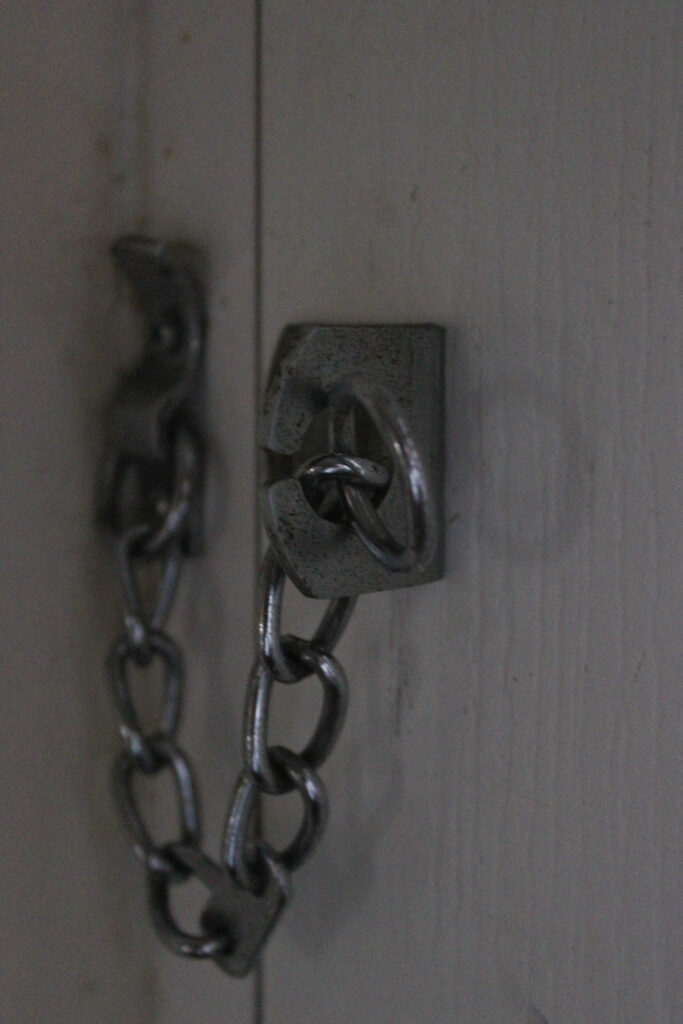
This image is taken of the lock on my front door which we don’t usually use however I locked it for the purpose of the shoot. Due to aggression being a large aspect of my brothers Bipolar disorder, I felt that this would symbolise it very well as this lock isn’t something that people usually use in their homes unless it is out of desperation for safety by keeping people out of the house. As I can’t ethically show this in a truthful way, I feel that this works very well as the locking of a door is used to keep unwanted people out. This side of the disorder affects my brother immensely, being times that he cannot control his behaviour, to then not being able to recall what has happened, accompanied by great feelings of guilt and hopelessness. I wanted to find a way to photograph this because I feel that this is the most vulnerable side of the disorder as it affects the entire family dynamic. I find that the darkness in this image contributes to this idea because the spontaneous aggression that can occur is incredibly dark and wouldn’t necessarily be something that many people know about as it is so shocking, however I want to bring light to this as I feel that it is one of the most important talking points within my work to talk about a real and raw thing in a more symbolic way. As the lighting from this image has come from behind me, this adds a metallic effect to the links on the lock which makes the image have a shiny appearance to make it stand out from the plain colours of the background. This makes the image look more appealing and stand out more instead of fading into the background.
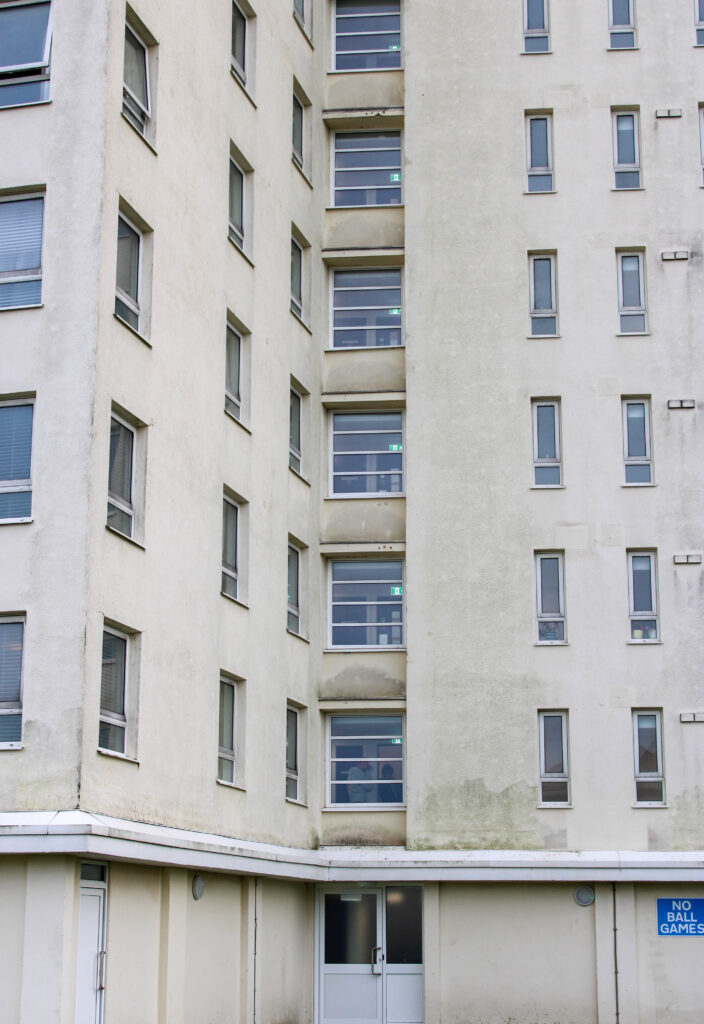
The Le Marais High Rise flats are located near my house so I decided to photograph them because they are relevant to where me and my brother grew up. I think that these flats can be used really creatively when photographed because I feel that they radiate this kind of lifeless energy, making it so even looking at them for too long can make you feel sad. Firstly, I feel that the bland cream colour that it has eradicates all life from it because it makes it look so flat and dull, washing itself out when paired with the stains that rise up with it as well as the off-white skirting and ledges. The repetition of the windows harmonises the image because this leads the eye to follow up the image in straight perpendicular lines that are organised, however the darkness that is within the windows adds anonymity to the image, as if all signs of life inside are hiding away. Whilst this was accidental, I feel that the two men inside looking out at the camera when paired with the bars on the window add to this idea of being kept like a prisoner in ones own mind because looking at a camera from inside could symbolise desperation to escape, like a cry for help towards the viewer. The repetition in the image keeps the composition consistent which I think could resemble how all the days may appear to merge into one and fly past a person as they feel a great loss of control over their life.

I took this image using a shallow depth of field in order to concentrate on detail of this eroded wall to capture all of the different tones of grey and varying holes inside. Whilst without context this image stood alone could be about anything, however my intention behind this image is taken from where me and my brother used to play in the park around the corner from my house. As you walk in, there is a slight hidden corner (which is in the background of my composition) of which me and brother used to hide in when we would be playing hide and seek outside when we were younger. This area brings a lot of nostalgia for me as when I was young, I didn’t particularly know anyone who lived near me because I didn’t go to the local school so I would always be with my brother and his friends, where I would see this enclosed space nearly every day. Some of my best childhood memories resonate with this small area, so when this image is paired with the ones that symbolise my brothers poor mental health as well as my experimental childhood images, I find that this image is very moving because when I was young, I would have never of expected that those times would have changed so drastically. I think involving this image in my work provides sentimentality, however it still has a lot of abstraction which will make my work look like a small snapshot into my life and my memories that can become really special.

The first thing that caught my eye in this image is the pairing of these different shapes and lines that contrast each other when they are layered. For example, the slide elongates from a square, and flows down pieces of rectangular wood out of the frame. Similarly, these wavy lines that the slide juxtaposes the linear flats that solely include straight borders in a harsh way, removing all soft edge. I also find that the natural lighting has made the slide look luminescent and contrasts with the depressing mood that the flat behind conveys. This glow around the slide can represent the fondness I keep for my childhood memories that I share with my brother being in this park, and how I still perceive him this way as at times in his illness I see my brother in a different light, as if he is a stranger. Once paired with these flats, I feel that this represents my negligence from reality, with the flats showing the raw truth that my brother is a completely changed person now as his illness has festered as he has grown, and depicts a scene of change in personality. As the flats look so lifeless and dull as they tower over the more ethereal-looking section of the image in the bottom left, this could be interpreted to resemble how these feelings of extremely high-highs followed by low-lows may feel overpowering at times and as it is impossible to overcome them as they appear so daunting to the individual.

I feel that this image radiates feelings of loneliness, specifically looking at the empty bench initially makes the image look abandoned and desolate, with no signs of life nearby. As you look into the background, the trees begin to intertwine and cross in a randomised pattern, bare from the loss of leaves from winter, which I think contributes to this feeling of loneliness as they stand alone and bare in an uncontrolled manner. The colour palette in the image is quite consistent, looking at mainly greys, creams, browns and greens so that the foreground is echoed throughout the entire image which pulls the entire image together.
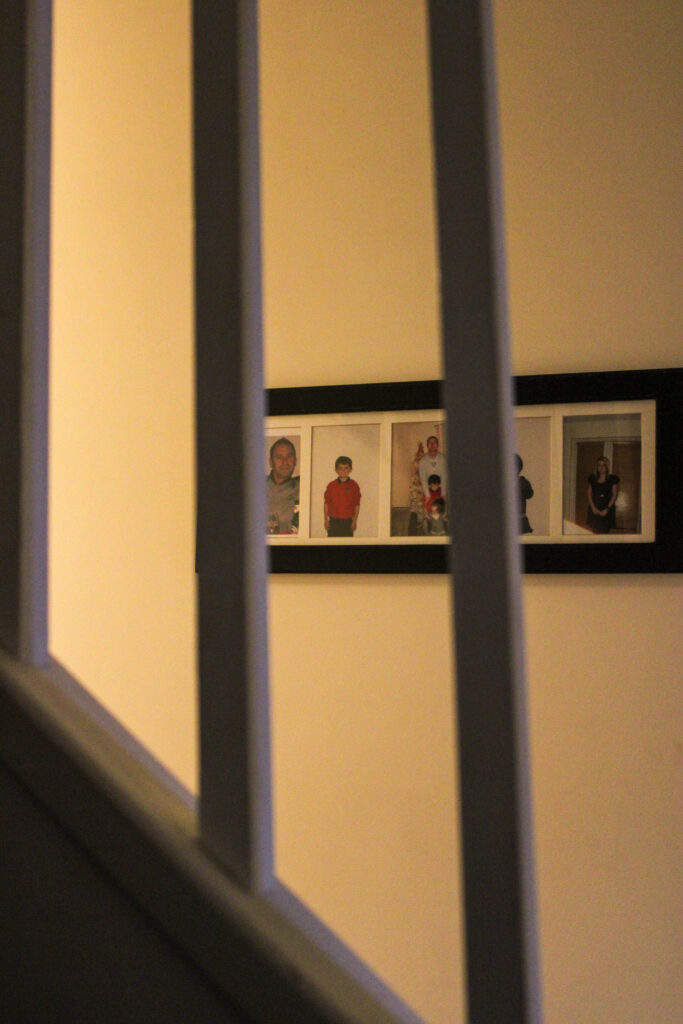
This image uses a deep depth of field in order to get a sharp shot of my brothers primary school photo framed in the hallway, whilst keeping the bars of my banister out of focus and blurred. I feel that the bars in the image have the ability to uphold this idea of my brothers mind acting as a prison that I spoke about in my earlier images, restricting him from thinking freely and having control over his behaviour. I wanted to include this image of my brother on the wall as if he is protecting his younger self from the mental damage that he has incurred as I thought this would make the work more meaningful, showing that he was still at a relatively young age when this all began. On the other hand, I feel that this image could denote the idea of being sat on the stairs when you are young and listening to arguments happening downstairs, for example when I had a limited understanding of what was happening to my brother I used to sit exactly here on my staircase to listen out and hear the conversation in order to piece the story together myself. I thought it would be appropriate to shoot an image relating to this because it links the project together better so that the viewer can understand the storyline properly.
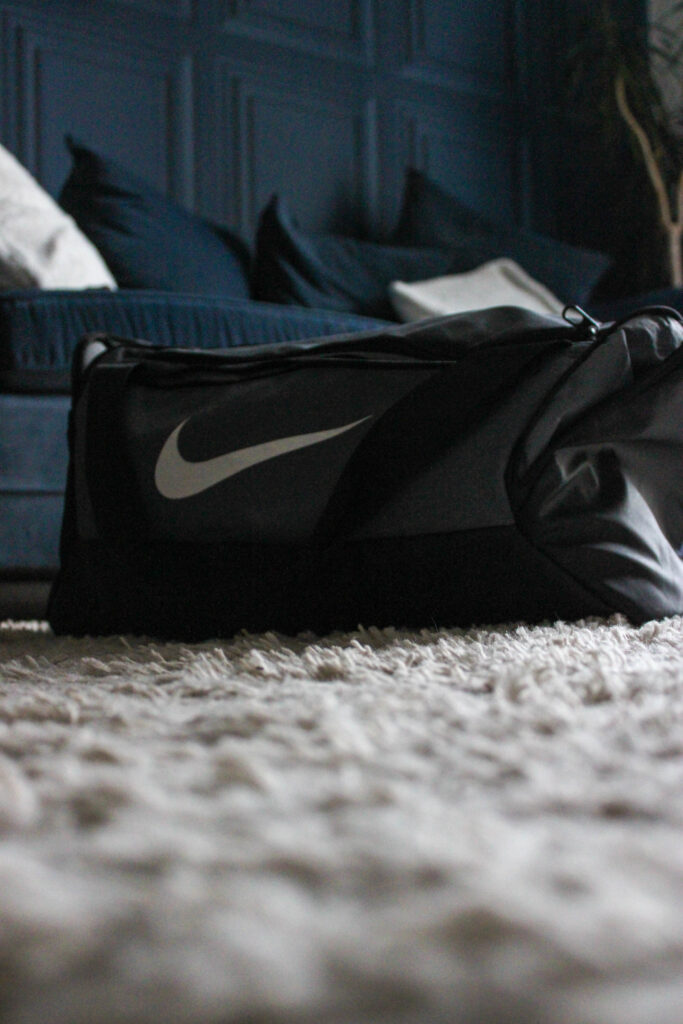
This image is shot of my brothers bag that my parents take up to him when he gets sectioned containing his belongings like his wash bag, etc. In this image I put the camera on its side on the ground to get a dramatic angle as I wanted it to have a powerful tone to it instead of just shooting head on in a simpler way. I feel that the grey of the bag goes nicely with the background as it has quite monotone shades. I used a shallow depth of field in order to make the background slightly blurred as this emphasises the bag as the main focal point and encourages the viewer to only look at the bag, reflecting significance. The lighting is coming from behind the bag, making the short glimpse of raw light begin creeping around the bag – I feel that this imbalance between light and dark could symbolise how the bag is only used for negative purposes, being that my brother has had to leave home, however with the short burst of light bouncing from the right of the image, this could be resembling how even though it is an uncomfortable experience for my brother, the outcome is positive and it is necessary that he gets the specialist care that he needs in order to get better.
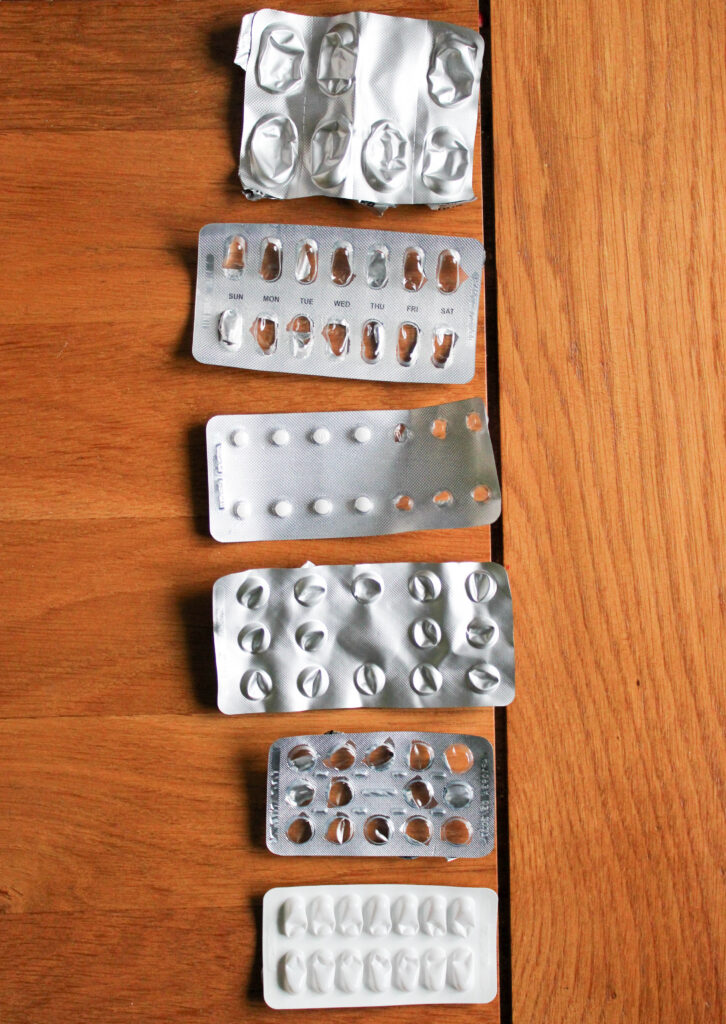
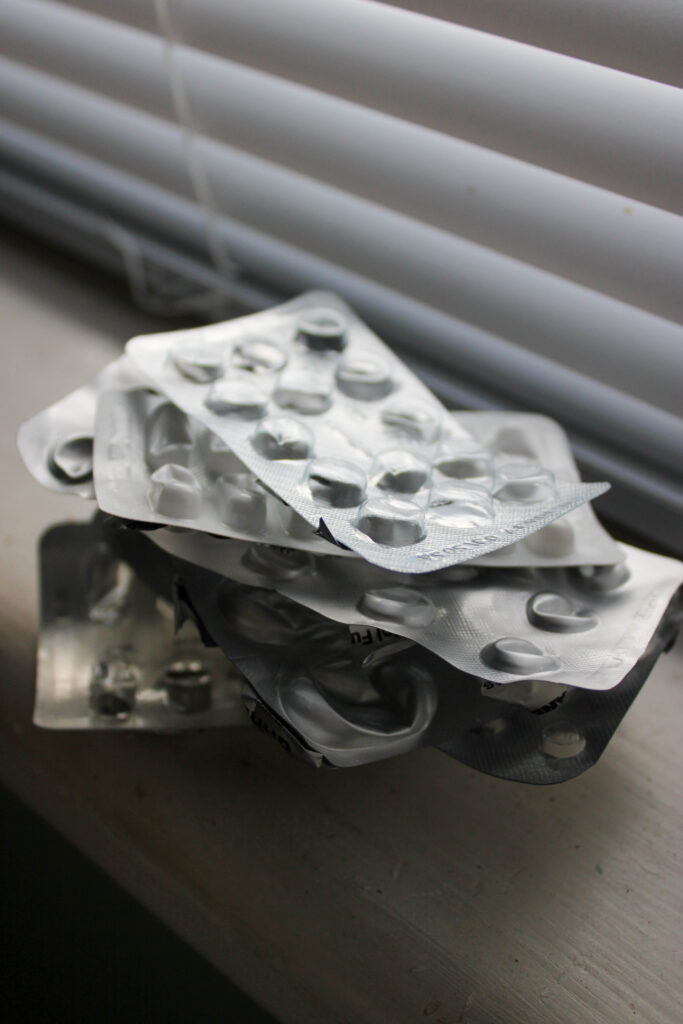
These two images are of my brothers empty tablet packets in two different perspectives as I was unsure on how I wanted to arrange them. The first image is more of a documental image with them all layered out in a structured way, whilst the image on the left consists of them in a pile in order to emphasise on the amount of medication my brother takes and to show how long he has been taking them for. As they are covered in foil, the natural light from the window has bounced off of them in a really pleasing way to make them reflective which makes the images more eye-catching. I don’t think I will use both of these images in my photobook, however they are both really good images and so I wanted to include them as I will not be deciding until I have all of my photoshoots completed.
Experimental images:

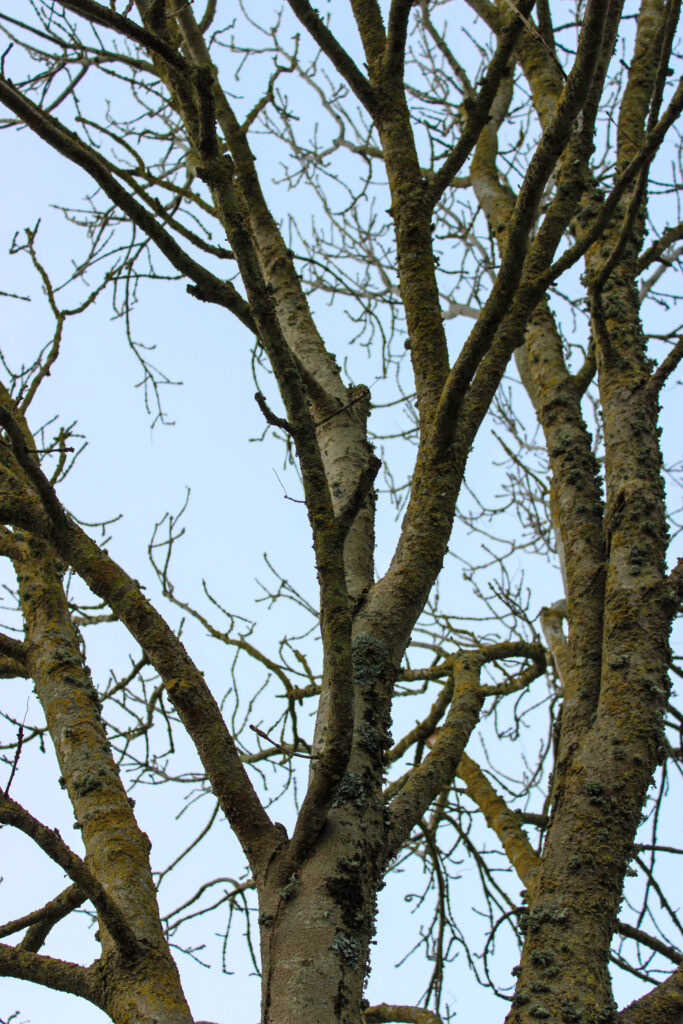
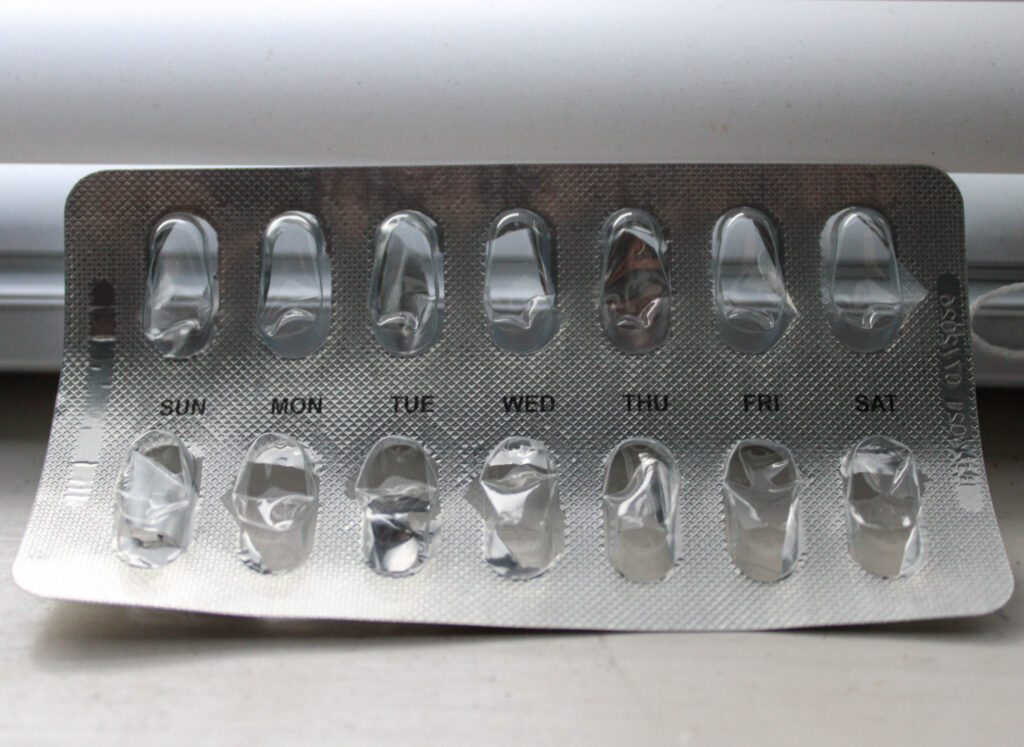
I took these three images with the intention of using them for experimentation, so I am going to try and explore different ideas with them. I might end up just using them alone because they are still successful images, but I need to play around with them in Photoshop first, and let my more detailed images take priority in my photobook.

